
11:59
11:59
A student-led magazine centered around the Cleveland Institute of Art's diverse student voices, amplifying individual creative expression, and inclusively representing student work and experiences.


11:59
11:59
A student-led magazine centered around the Cleveland Institute of Art's diverse student voices, amplifying individual creative expression, and inclusively representing student work and experiences.
Editorial Design & Production
Benjamin McDougall
Samantha Mitchell
Wild Shafer
Creative Direction & Production
Elijah Boyd
Sarah Selan
Experience Design & Promotion
Charlotte Smoley
Annie Koppitch
Editorial Directors
Chloe Heidemann
Agi Kasapi
Camron Wright
Associate Editors
Agent
Dunstone
Katie Linton
Lead Copyeditors
Brody Burton
Hako Greene
Claire Miles
Production Directors
Gianna Andujar
Stacey Bruce
Cameron Krizman
Communications Directors
Hailey Fuller
Chris Sitney
Faculty
Zach Savich
Adam Lucas
Copyright © 11:59 2025

Welcome to 11:59! This magazine is a collaboration between GDS 352 Publication Design and WRHC 330 Editing + Publishing Workshop produced in Spring 2025. Our mission is to be a student-led journal centered around the Cleveland Institute of Art’s diverse student voices, amplifying individual creative expression, and inclusively representing student work and experiences.
You may have different associations with the concept of “11:59.” It’s a deadline you see in Canvas, Google forms, and applications for residencies, exhibitions, and jobs. It can also bring up a universal feeling that has to do with things coming to an end. It might also bring you thoughts of new beginnings, the start of a new day, and what comes next. The magazine staff had many interpretations of what it means to us. Keep staying curious. You’ll find additional editorial notes in the pages ahead. In the next one, we’ll say more about the process that led to the magazine’s name.
That’s one way we’ve highlighted process throughout the issue. We wanted to bring you a behind-the-scenes view of CIA students’ work. In addition to editorial notes, you’ll find interviews about students’ artistic processes, an essay about how AI is changing the work of design, and pieces that document works in progress. We’re also making a film that explores the making of the issue. Our maximalist approach to design takes this even further. We wanted artworks to fill up the page and almost seem to come off the page. We hope this helps the magazine to be a source of inspiration.
Inclusivity matters to us, and students from every major at Cleveland Institute of Art have work represented in 11:59. That includes pieces ranging from photography to painting, from poetry to product design. Your experiences as a reader are also part of the issue. Feel free to make notes, draw, and get inspired as you check out the amazing work featured in 11:59.
We’ll see you at the next editorial note!
The 11:59 Team


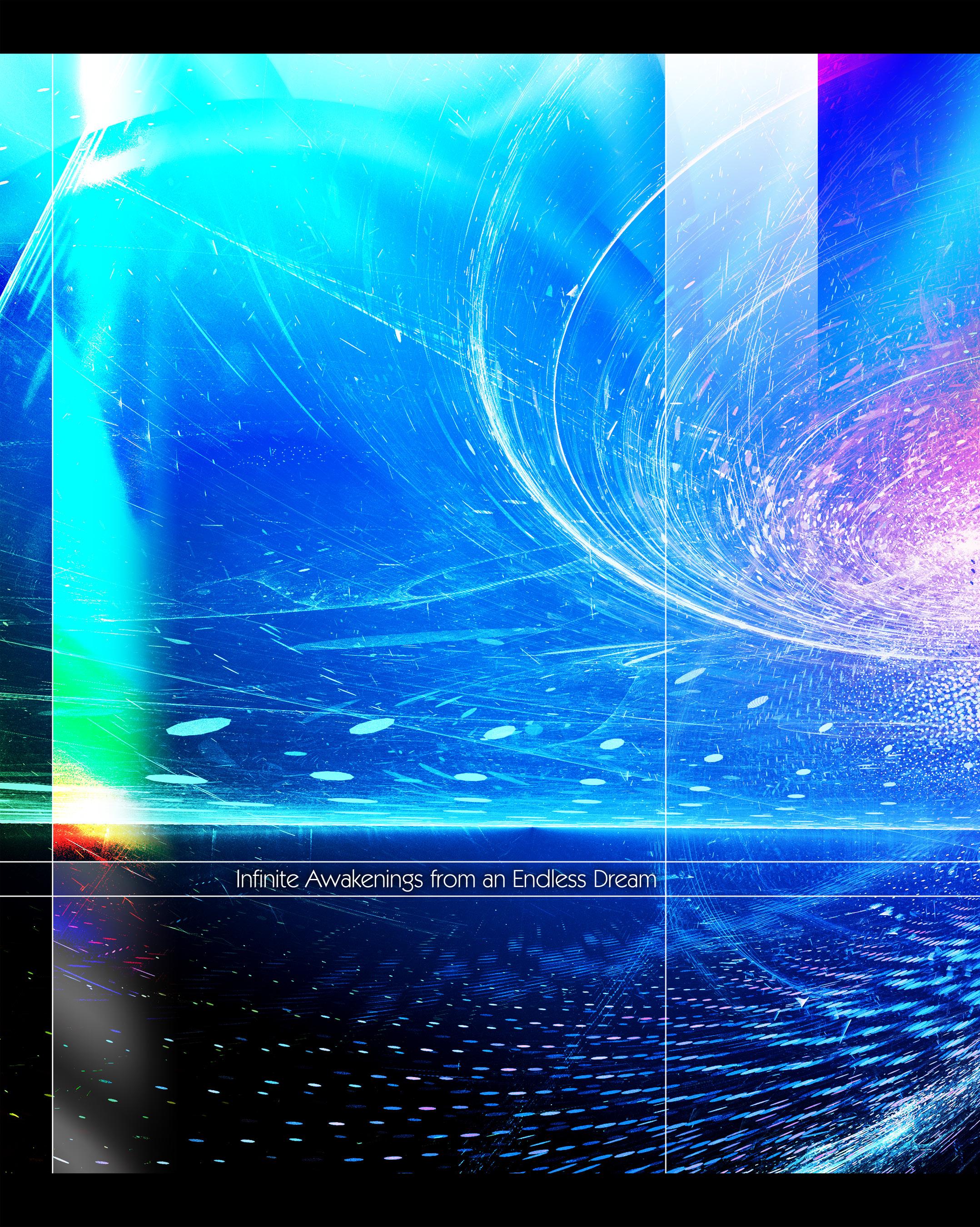


Grace Koenig Drawing ‘28


Ash Olszewski Painting ‘27







Chloe Heidemann Animation
I love the feeling of traveling, Of knowing I am going somewhere. Moving gives me a sense of purpose. Well... Is it purpose?
I’m not sure. It might be a sense of coping, For experiencing change...
I often feel unsure of things, but I know that I love moving. I love the color yellow! Though at one point I was unsure of that too. I love being tall! For the most part. I love food! But do I really?
I am such a picky eater that sometimes, Eating with others sounds like... Well, A nightmare. So maybe I’m still not sure if I love food.
I think about this often. When I’m going to class, Talking with friends, Eating with family, Being unsure is surely a weird feeling... From what I have seen... I guess.
I wonder if other people are as indecisive as me. Do they question all of their choices? What it means to be themself? What it means to like something? Or is that just me?
Maybe I love being unsure, My father would certainly agree. I wonder if to love something, Is as meaningful as to be unsure of something. Do I know what it means to love?
I’m really not sure...

Zoie Olbrysh

Lillian Gomez
Sculpture
and Expanded Media
‘26
The crisp autumn air fills my nostrils, making its way into my lungs
A chilly breeze kisses my cheek, causing my skin to turn a rosy pink
The wind passes through the tiny holes of my knit wool sweater as the sounds of the forest come together to create an atmosphere where it is never silent or lonely
Rustling leaves fill the background with a deep hum while birds sing melodies, and mosquitoes emit a high frequency buzz
Far in the distance is the repeating tap, tap, tap of a woodpecker chipping away at the bark of an old oak
As I sit underneath the tree, I feel the leaves fall between my curls, embedding themselves in my personal space
I pick them out as best as I can, feeling as they disintegrate between my fingers, sprinkling themselves through my scalp like confetti
The smell of nutrient-rich soil combined with rain is a pleasant and familiar scent that conjures memories
The long, untamed blades of grass provide my body with a cushion to a slightly damp ground
I run my hands across the plush moss that cascades up the trunk
Thoughts of becoming one with the earth consume me
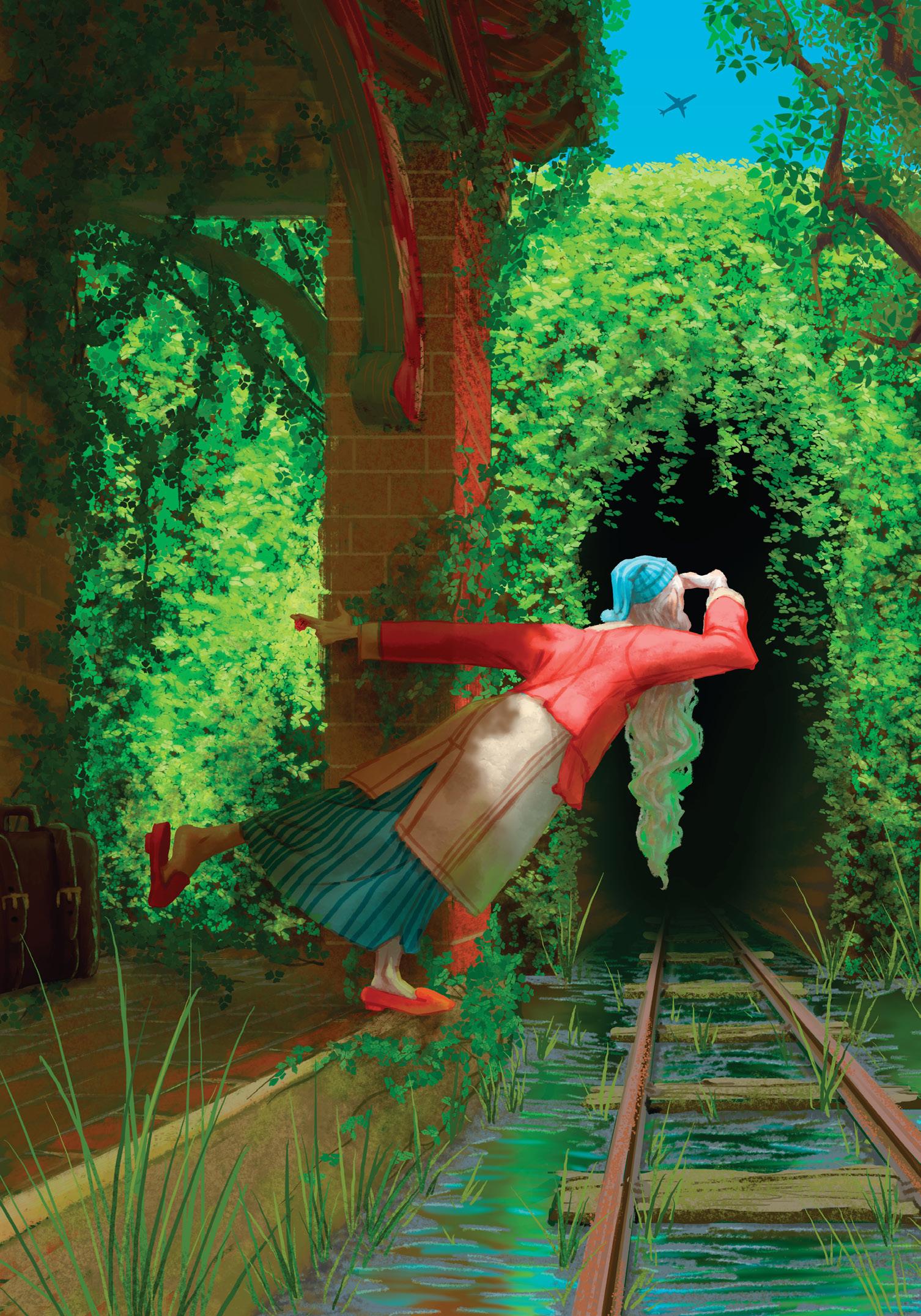
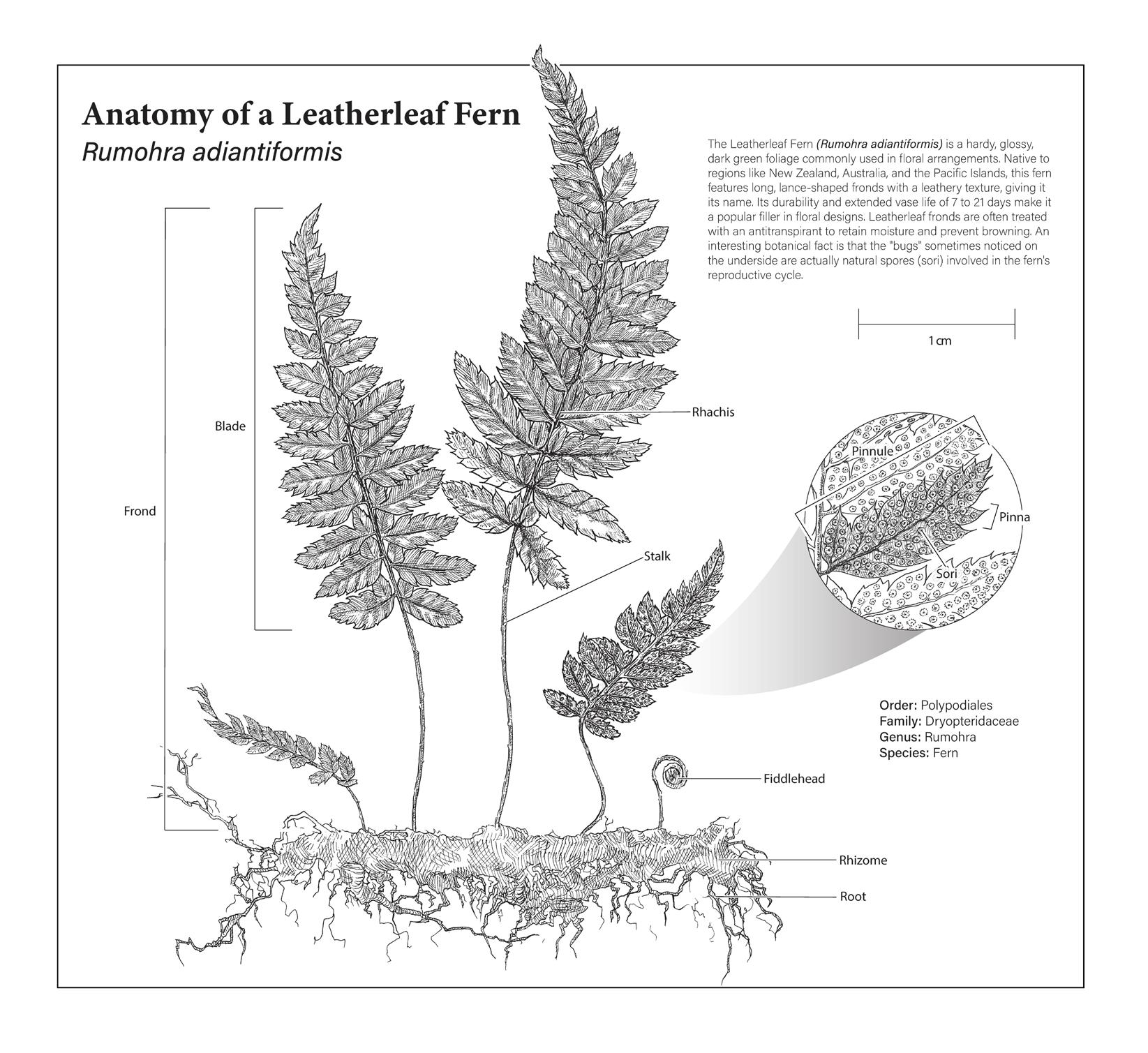
Life Sciences Illustration ‘27

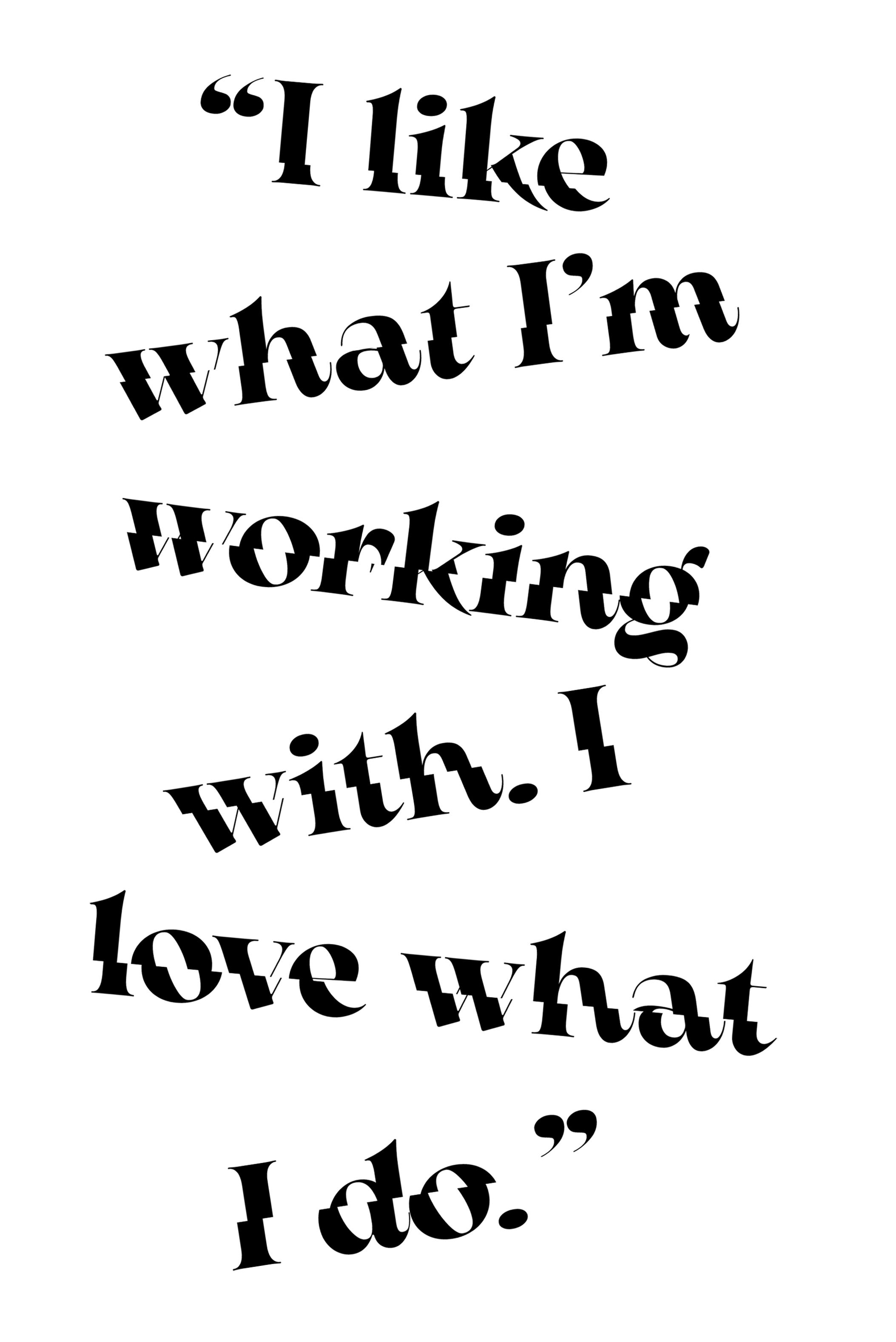

“It's a completely different media. It's more sculptural.”

“I didn't choose glass because I wanted to pursue that with my work. I chose it because the act of doing it fits me better as a person with how I work.”
A Conversation wiith Ryan Garcia
Ryan Garcia is a junior majoring in Craft + Design with a focus in glass. Through our interview, we chatted about the processes of glass, what themes he covers in his work, and his plans for the future.
11:59: Could you talk about glass as a medium and what that process looks like?
Ryan: There’s a couple of different ways that you can use it or utilize it. I mainly focus in glass blowing, which is the process of gathering molten glass on the end of a long pipe. It’s kept at 2,150 degrees. Then you gather it at the end of a pipe, blow air into it, and form it using metal tools. It’s an interesting material to work with. You have to learn how to manage a constantly moving material that is at a high temperature. You’re not allowed to touch it with your hands.
You can only touch it with metal objects and metal tools. Then after it cools down you have to reheat it back

up again. It’s a lot of back and forth with heating it up, working with it until it’s cold, and then heating it back up again and just doing that process over and over until you have your finished piece.
11:59: What themes do you usually work with?
Ryan: I originally started off trying to go into illustration. My entire high school art career, if you wanna call it, mainly focused around drawing and 2-D media. But I got to CIA and I really enjoyed working with glass. So I got a clean slate with the type of work that I do because it’s three-dimensional. It’s a completely different media. It’s more sculptural. There’s different routes you can take with it but, as of now, I focus mainly on practicality. Often there’s themes of understanding anxiousness and emotions revolving around having
ADHD and how that affects my focus and me as a person. So there’s this–it’ll usually fall under a practical theme or a theme revolving around how I manage ADHD or anxiety. Then over on the side, I really enjoy making cactus forms. I find that when I struggle and I can’t really figure out what to make, conceptually or practically, I revert to making a cactus. It’s kind of a safe space. It’s a theme that I was working with a lot when I did illustration. It’s a comfort when I don’t really know what I’m doing and a familiar form that I can come back to when I’m struggling.
11:59: How does the structure of your major help with that theme? Why glass?
Ryan: Well, I didn’t choose glass because I wanted to pursue that with my work. I chose it because the act of doing it fits me better as a person with how I work. Like I said, I have ADHD, so I can’t I can’t sit still and be at a desk and draw for hours at a time. I’m always fidgeting or moving. When I really enjoy doing it, I do it. But something that I’ve noticed just all throughout life is when I have to sit down and do something and I don’t wanna do it, it’s one of the hardest things to do. I think if I would have to sit at a desk and draw something I don’t wanna draw, it would ruin drawing and illustration for me. But with glass, it’s something completely different.
You’re up and you’re moving around constantly. It’s a very physical medium and major. You’re constantly working with the material and working against it. By having that sort of relationship with the material, it’s easier for me to work with. It’s also like it’s a one and done thing. It’s not something you can start and then put off for a while and then pick it back up again. Everything in the hot shop is boom boom boom. Get it done, knock it off, put it in the annealer and then you’re done with it. It fits with my tendency to have bursts of creativity. Some days I’m not feeling super creative. I don’t really wanna do anything. I can work on stuff that doesn’t need me to be in the hot shop. So I can cold work stuff. I can plan stuff out. I can organize color. But when I am feeling creative and I am feeling that need to create something, I go into the hot shop and I make whatever and then it’s done with. I like that beginning, middle, end sort of aspect to it.

When you start something, you need to finish it. Otherwise, it’s gonna go all over the place.
11:59: How do deadlines affect your work, your practice, and your making process?
Ryan: It depends on what you wanna make. Since glass blowing is such a one and done process, there are times when you really need to plan out what you want to do before you do it. Other times, it’s good to be a little intuitive with it and just go in without any real plan. But if you’re working with a deadline, you really don’t wanna be wasting time being unsure about what you’re doing. Once you know what you wanna do and you have that idea, you’re able to bring it to fruition quickly and efficiently. That’s really the way to go. Like I said, it’s a one and done thing. You put it in the annealer and then wait till it’s cool and then it’s done. I think just planning stuff out is really the way to go when it comes to working with glass blowing specifically.
11:59: What do you want to put out into the world?
Ryan: I’m not a huge fan of the studio artist way of submitting stuff to galleries and hoping you get in. I really like production. So working for a company that creates glass products. Stuff like that I think is more my route. I find enjoyment in that production process of making something over and over and over again and then maybe on the side I do more creative stuff. Other than that I’m not really sure where I’m gonna be going. I like what I’m working with. I love what I do. So I’m really hoping that takes me somewhere.
“If you’re working with a deadline, you really don’t wanna be wasting time being unsure about what you’re doing because then you’re wasting time.”
-Ryan Garcia
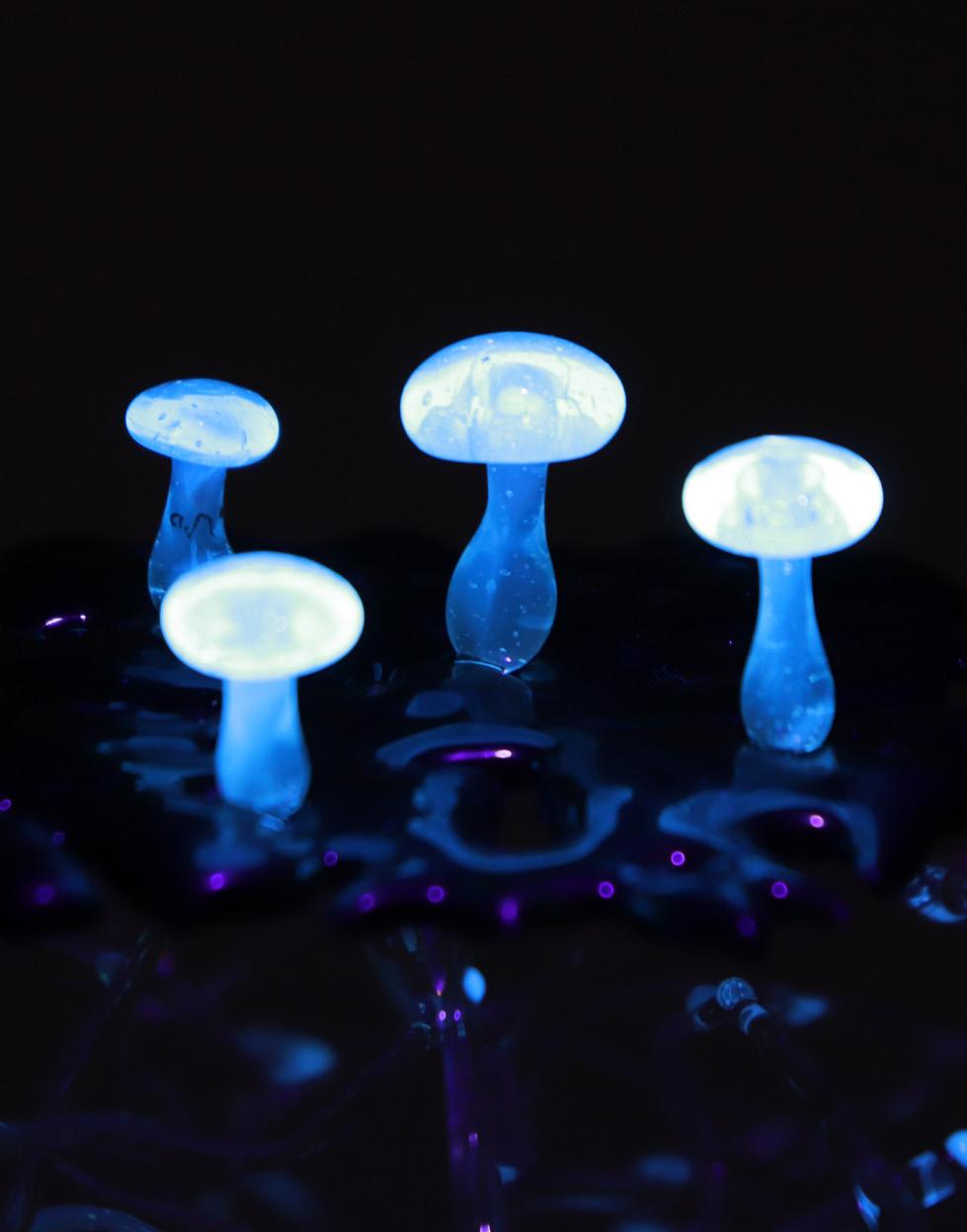
11:59: For your BFA next year, do you have any ideas for what you’re gonna do for that body of work?
Ryan: Yeah actually. There’s a process in glass called reduction. It’s a little bit of science. Glass color is made with metal oxides. You mix those chemicals in with the glass and it turns into whatever color it is. Certain colors can be reduced. When you take a gas-rich flame that has no oxygen in it and you hit the color with it, the flame acts like a sponge and sucks all the oxygen out of the metal oxides. Then it leaves all that metal on the surface making it look either silvery, gold or whatever shiny color. I use that technique a lot in my work. It makes these nice sparkly bits but what it also does, because it is so shiny, it becomes a reflective surface. What I’ve been playing around with a lot in the cold shop is using the silver mirroring kit which is just how they make mirrors. You do a layer of tin and then put the silver on and it turns reflective. But I think for my BFA I want to play around with looking at mirrors, symbolism, reflections, and how optics of glass work with reflections because it goes hand in hand. Mirrors are all glass. I think glass is unique in its transparency so you can see through it. There’s a lot of interesting effects that go on with light optics and how that works. It’s just a starting idea but we’ll see where it goes. I think it’ll create an interesting body of work.
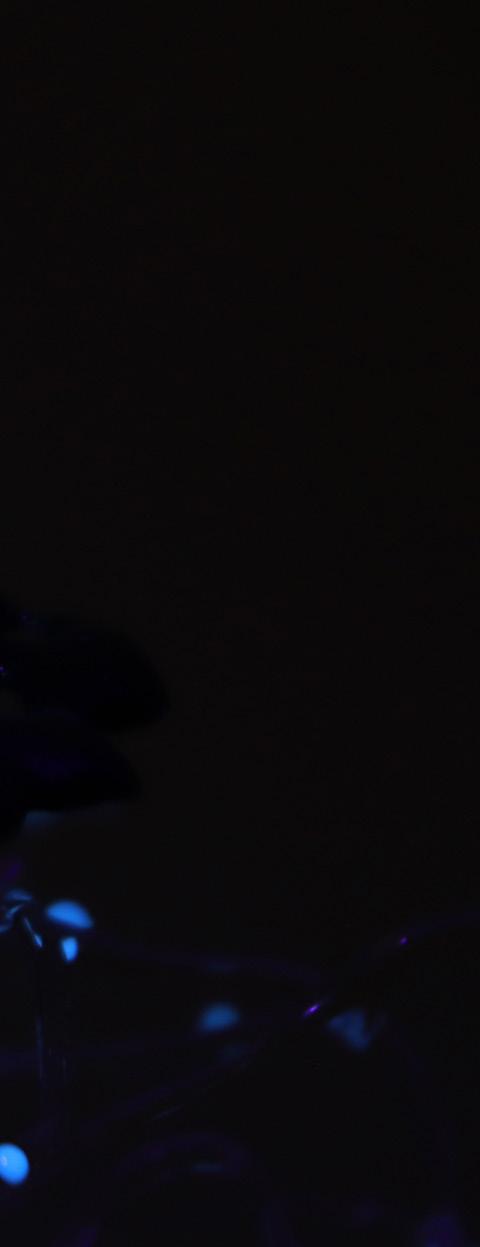


Illustration ‘25



Mornings
Life Sciences Illustration ‘27
Life Sciences Illustration ‘27
We see a city street at the height of the afternoon, busy, loud, moving like a river. People push past each other like salmon; sliding, slippery scales catching on purse handles and coat pockets. The road is full of cars so unmoving you would mistake them for outcroppings of rock if it were not for the violent chorus of honking, beeping, screeching and singing they produced. The other side of the walkway offers no solace. Shop owners hover at the edge of the riverbank like bears, watching the salmon flow by. They dart in and out of the entrances to their dens, yelling and reaching for the fish and their purse handles and coat pockets. Even when a bear finally catches one, the crowd pushes past unwavering. A metallic scent lingers in their red painted doorways, drifting out to the sidewalk to mix with the rot and decay coming up from the steaming sewer grate. It comes in waves of old flesh and waste, something unrecognizable slumps on the curb, its contours eroded by mold. The crowd pushes past. If they move quick enough the smell will only last a second.
There is a park shrouded by the cloak of night. The air has grown cold in the absence of the sun; the dew has settled on the grass. A slightly sweet smell lingers in an attempt to erase the rancid scent of the city streets. Every so often a whiff of that metallic rot seeps through. A batch of lonely street lights dot the walking path around the park, spread too far to have their dying light be anything of use. Trees line the edge of the grass. Tall and whispering, the wind pushes through them tilting their branches
towards the center of the park, grasping for something only they can see. They mutter to each other in creaks and groans, their bark cracking as they lean. One leans too far and the sound cuts through the air like a clap of thunder. Shadows move over their roots, careful footsteps barely audible over the whistling and crashing of the trees in the wind. Hovering at the edge of the grass, it seems something is keeping them from moving out from under the cover of the branches. Their eyes wide and unblinking, staring as they wait.
We see one of the salmon, a girl. She’s walking down the street, past the bears and the rocks and the rot. The sun is glaring and there are no clouds to hide it from her eyes. She squints, turning the crowd into a blur of dark shapes. She is unable to make out the details of the faces heading towards her. The bears are roaring, reaching for her with knife claws and hungry eyes. Her nostrils fill with acrid air, her ears catching fragments of words and pieces of conversations, each slipping away before she can make sense of it. The sun is beating down, burning the top of her head, her cheeks, the bridge of her nose. Her vision begins to swim. She feels something looming behind her. Moving faster, her breath leaving quicker than she can catch it; the sweat on her neck curls the hair at the base of her head. She is too frantic to turn for fear of being caught. She starts to run, desperately trying to avoid getting caught in the crowd. She can see a break up ahead, a patch of empty sidewalk calling to her. She pushes her legs to move, her feet heavy on the pavement, her breath
ragged. So close, she reaches her arm out to it, but something large and heavy grips her shoulder, the pain making it impossible to take another step.
There is a walking path in the park. A different salmon has broken from the run hours ago, finding herself lost downstream. As far as she can tell, there are no bears here. No rocks, no crowd, no yelling. Their absence is almost worse. She pauses under a light, squinting into the dark. The flickering bulb makes it impossible to distinguish one shadow from another. She has put herself under a spotlight, extremely visible but still unable to see. Paranoid, she moves on, following the path like she knows where it is going. Her heartbeat fills her ears, an erratic drumbeat threatening to spill out into the open air. The trees creak above her, moaning as if they were in pain. The wind howls in response. She thinks she hears rustling footsteps behind her, whipping around to nothing but an empty path. She can’t tell what is real anymore. Her pace quickens as she holds her arms close to her chest tensed and ready. Her head swivels, eyes darting around and catching the edges of shadows as they move between the trees. She hears the footsteps again, this time she is sure they are real. Without looking back she starts to run, head swimming with stories she has heard from friends, mothers, sisters. She comes to the end of the path, the end of the flickering lights, and has nowhere else to go. The trees are reaching for her, the footsteps are getting closer. She runs into the dark of the forest.

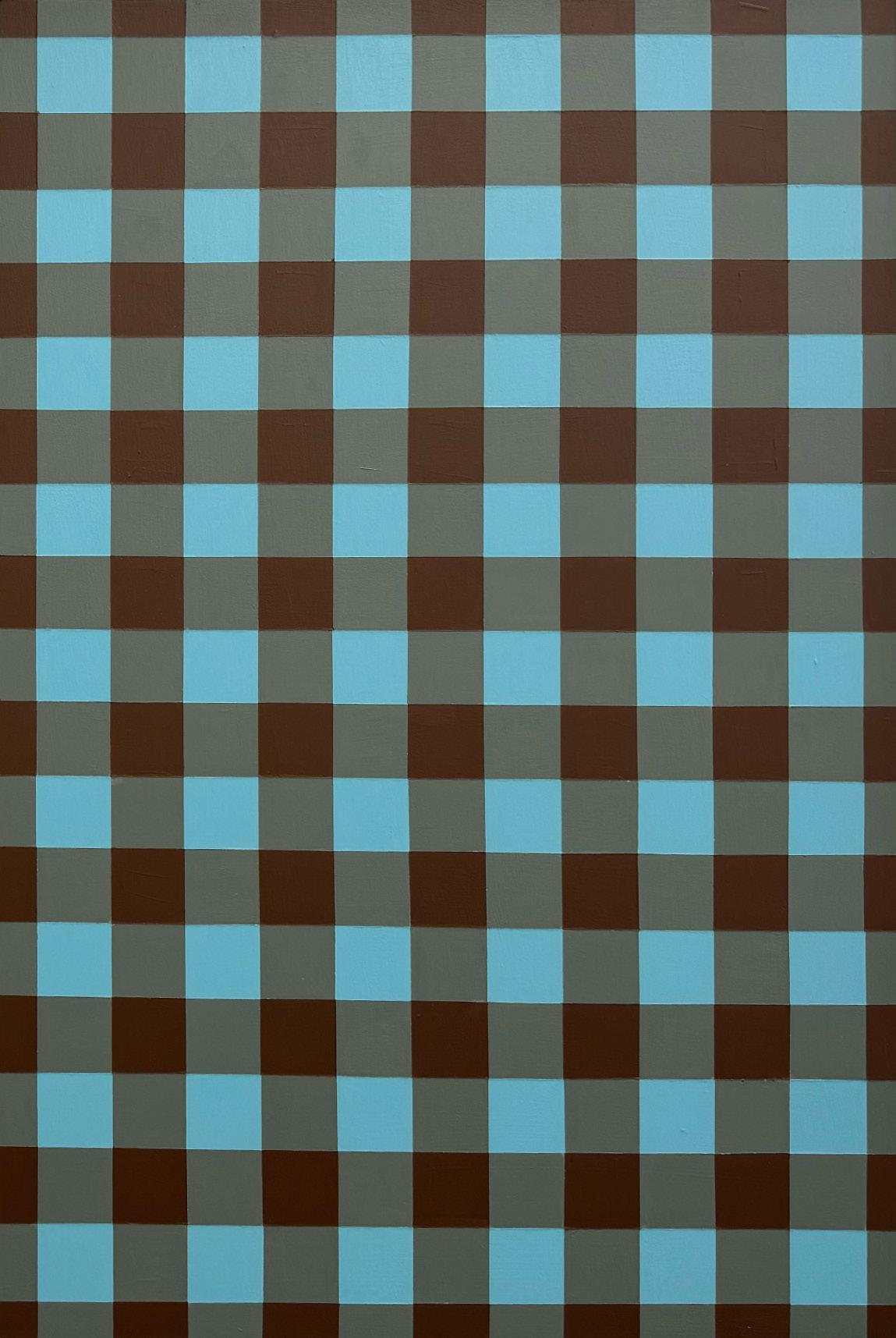

Emily Fontana
Painting ‘25



Katie Linton
Illustration ‘25

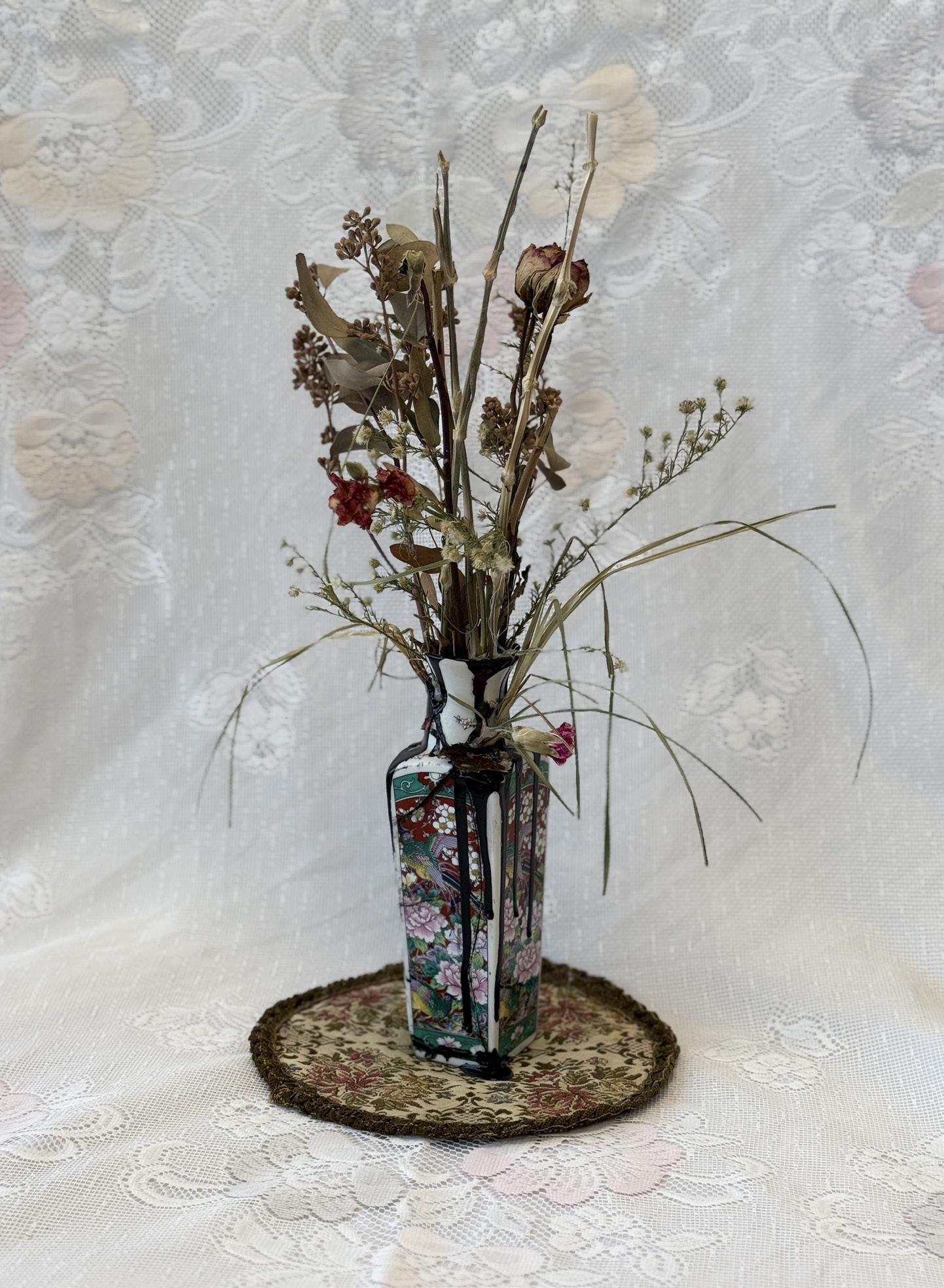


Wondering how we got our name? 11:59 was a popular choice among the magazine staff, but how did we get there? Last year the student-led magazine was named Ctrl+S. We had the choice to keep that title and follow a tradition or to make our tradition about change. A new name gives creative freedom to explore. We hope that students in the future will also have the chance to create a magazine freely. This year, we brainstormed new titles, discussed, and voted. We had a lot of options. Visionary Digest. Lose the Thread. Ctrl+T. CTRL+ART+DLT. We decided on 11:59. It’s not just about deadlines. It’s about transformation and change. That aligns with our ideals of breaking tradition.


Blake Nicholas
Illustration ‘26



Grace Koenig
Drawing ‘28

Finn Fuehrer
Drawing ‘26
In which I write a letter to people who have hurt those I love. It is strange that these people are who I consider writing to first. Not my mother, not my best friends. Not people who have hurt me. I write to those who have hurt the people who would never hurt me. I would ask: what have they gained from their actions? How disgusting and vile they must be on the inside to believe they can treat anyone like they have.
In which I write a letter to hypocrisy. I have done things in my life I am not proud of. Do I act like those whom I despise? Is gossip the devil’s whisper, or am I just a twenty-yearold bitch in college? I am not kind. I am not gentle. Not in this moment. We are human. The same thing that warrants forgiveness holds me back.
In which I write a letter to forgiveness. Hate festers within me and yet I expect, I yearn, to be forgiven for everything I have ever done. Do not sort my actions by morality. I could not live with becoming any burden. It seems to be in my best interest to prioritize a gentle voice and a broken record apology. It will reach a point of singularity where I apologize for apologizing far too much. Thus trapped in a paradoxical cycle.
In which I write a letter to compulsions. Soul-sucking, life-saving cycles. I am a dog forced to spin and spin without lying to rest. Confined within a head that is consistently unclear and cloudy. In the end, I must owe something to a higher power if this is my fate.
In which I return to write a letter to forgiveness. I do not forgive lightly. I do not forgive the aforementioned people. I gnash and grind my teeth attempting to hold back my anger. They don’t make muzzles for humans.
In which I write a letter to god and my dog. I miss my dog.
In which I write a letter to compassion. I receive compassion as steady, calming ocean waves. I know not to say that I do not deserve it, despite the thought creeping closer. But I do deserve it. I have been kind and gentle. I do not need to forgive, not now. I am growing.
In which I write a letter to cycles. I will experience this tomorrow. And the day after.

Illustration ‘26



Mary Hansen
Illustration ‘25







“I need to be in the mood to make. I need to be in the headspace
where it's just me in the studio, and that doesn't happen all the time coinciding with deadlines.”

“It is pretty and that is okay. It's allowed to be just that.”
“I've been starting to make my own ink out of natural elements like beets and tumeric and copper.”
“It is pretty and that is okay.”
A Conversation with Natalie Russell
Natalie Russell is a senior majoring in Printmaking. In our interview, we talked about the themes of her work, the processes of Printmaking, and the status of her BFA.
11:59: What’s your BFA process, and how’s it going?
Natalie: I have been mainly focusing on color and their relations with other colors. I’m looking at different hues and saturations and how they are overlapping and layering. So far, I’ve been working mainly in abstraction, trying to take away the imagery behind it and focusing purely on formal elements such as shapes, lines, and movement within the work. Going into this semester, I’ve been starting to make my own ink out of natural elements like beets and turmeric and copper.
11:59: What medium do you usually prefer within print?

Natalie: Linoleum mainly. I also do a lot of screen printing. Last semester I was using the linoleum blocks as a starting point, a place where I can play and try different shapes and different compositions. Then I would take the compositions that I really enjoyed or wanted to continue exploring and then turn them into a screen that I can then use to replicate easier with different color variations.
11:59: What do you wanna put out in the world with your art?
Natalie: I think because of the art that I am making, I’m mainly focused on the beauty of it. Just getting to look and see those colors and taking a moment to experience the artwork. Really just being in that meditative state of this is this thing and it is pretty and that is okay. It’s allowed to just be that.


11:59: Do you have any goals after graduation when it comes to your art-making processes?
Natalie: Yeah. I think like most of the seniors, I am burnt out, and I definitely want to take a little bit of a break from doing art all the time, twenty-four-seven. I’d like to get a normal person job, like a normal nine to five, but still kind of do art on the side as more of a hobby to start with. Then kind of slowly going and doing more with it.
11:59: Our magazine is called 11:59. That brings deadlines to mind. How do deadlines affect your work and affect your art making process?
Natalie: I think for me, if I didn’t have deadlines, I wouldn’t get anything done. But I also think kind of the way that my practice works, I need to be in the mood to make. I need to be in that headspace where it’s just me in the studio, and that doesn’t happen all the time coinciding with deadlines.
“I think like most of the seniors, I am burnt out, and I definitely want to take a little bit of a break from doing art all the time twenty-four-seven.”
- Natalie Russell




Finn Fuehrer
Drawing ‘26


Finn Fuehrer
Drawing ‘26


Finn Fuehrer
Drawing ‘26



You’ve made it about halfway through the magazine. Let’s take a break and talk a little more about the process of making this issue. We gathered submissions from across CIA. Around week three of the semester, we started to make final selections for the publication. It’s been a long process, but as a team we started to see how our magazine would take shape. We all had different responsibilities. Chloe and Chris conducted interviews. Sarah started working on a film. Wild began design for featured content. We started to get excited about pieces like “Shooting Stars” by Jazzy Blackwell, “Kickflip” by CHUNK, and “See and Be Seen” by Ryan Garcia. These submissions are some examples of the great range of the work featured in this issue.

“Ask


Everson Brooks
Drawing ‘27
It’s difficult to live in a body that does not exist the way I want it to. That I have to fight for it to be clear to me, a moment of pride for me, and for it to exist in a state where the world will welcome me. To an extent we are all at odds with our bodies, and at odds with the Outside, but I live in a body where the mental and the physical have such a profound disconnect that I can’t help but marvel that such a relationship exists at all. I experienced my first relationship as a girl dating a girl and I was so ready to take on the masculine role, wear the suit to the wedding and work the nine to five. Hell I remember telling her that in order to appease her mom who hated me I’d happily pretend to be a boy. I masqueraded as a guy online because it felt so much better to be called a pretty boy by the people of the Internet that would never see my actual face. And over Covid I chopped all my hair off and never went back, until I finally fell back on the term non binary and wanted to wear pretty braids again.
I never once doubted that I was transgender, the way so many other people do. It was one of those things where once I knew it was a Thing that could exist I could unfortunately never go back. I had bitten some taunting apple that revealed to me the cursed knowledge that I had never truly been comfortable with being a woman before, but I would have never known that it was Not Normal to feel numb to yourself if it weren’t for the fact that other people had figured it out before me. I was never
ever going to be able to be called She again because it was never going to fit, not that it had ever fit before but suddenly it was utterly impossible to try it on again. I am burdened with knowledge that changes the course of lives and brings many of them to an end.
This idea I have of the original sin of genderqueerness calls to my mind the knowledge that so many people hate their identities because of how it has hurt their families, their loved ones, a fact which I despise because I hate this idea that this burden is one to regret, or that you should pine for the reality in which your parents didn’t feel strained because of it. Of course there is grief for the past self, or for the self you could have been, but if we existed to make each other happy first and foremost then we wouldn’t be born as girls but as doormats. And truly I can’t imagine a world in which I remained my ten year old self forever. As much as it fucking sucks to wake up so many days feeling like my hips are getting wider I don’t think I’d ever give it up. At least now I have some catharsis from knowing that there is a reason why I am startled seeing my reflection, having forgotten that I had a physical form in the first place.
My Being consists of two related but divided parts: the neuro and the physical. I contain a brain that is mismatched with my body and having realized it I can never look back. I live in a limbo state between
disconnect and true parity, a nirvana only achievable through the hesitant and forever challenged kindness of doctors who care about me simply as a statistic and as a paycheck. I’m not supposed to exist, apparently, as a secret third option, and I am shunned because I can’t use a urinal and I like to keep my hair long. To be quite honest my physical dysphoria is actually quite manageable– I’d say I have just a slightly more acute form of insecurity than the average person– really my twisted relationship with my own body is caused by the fact that the General Outside does not want to accept that my body takes its form the way it does. But in order to achieve the state of Being that I want I would have to go under the knife and give myself shots in the thigh every week or so basically into perpetuity.
I don’t want it to sound like I hate my body. Honestly I think the idea of Living is just so incredible that I could never be mad at having to take some confrontational shape in order to experience Living. It’s not my fault that I am alive anyway; some innumerable amount of coincidences has occurred just for me to exist, and coincidentally one of those diverting paths of time caused my body to stay female as a fetus rather than taking the stride towards maleness that my brain, speedrunner that it is, leapt for. All of this is to say that I find myself constantly enamored with the subtleties of my form, the bump formed by the joint of my wrist as I flex it, the slim
waistline curving up to form the gentle arch of my swayback, the planes of my body that are revealed by shadows and which disappear again when light returns. I explore life through the physical and to be tactile, gestural, intimate, all feels like a beautiful dance between synapses, muscles, and time. My body is not perfect, I have innumerable aches and pains, weak joints, scarring, assymetricalities, and the most obvious to me are the mistakes of sexual dimorphism from some biological error out of my control. But in spite of, or most likely because of, these intricacies, insecurities, “flaws,” I can appreciate what I do have, what I can have, and where I came from, and the fact that I even can exist at all. Out of all my bodily flaws the most striking is my pectus excavatum that leaves a cavern in the center of my chest. To me it makes my torso asymmetrical, and my chest too noticeable. But to my partner it’s a space of warmth between us, just for him and me, the closest anyone will ever get to my actual heart and soul, at least until the doctors I pay life and limb for finally come and tear through my flesh to make the flat chest I always wanted.

Joshua Litten
Industrial Design ‘26




An Article by Agent Dunstone
AI is becoming a big player in design, transforming industries like automotive and product design by speeding things up and cutting costs. While the ethics of AI in art are still up for debate, its efficiency has convinced companies like Ford and Stanley Black & Decker to get on board. But as this shift happens, it raises key questions about the future of design education—will AI replace traditional skills or inspire designers to develop new ones? This paper looks at how AI is shaping both the industry and the future of design professionals.
The above was ChaptGPT’s suggestion for a start to this essay. We might debate whether AI is ethical to use for artists and classes, but some industries have already made up their mind. The promise of quicker results at a fraction of the cost is not something that industry can simply turn down, but how effective is it at saving money? The field of design relies on the artist’s understanding of human needs, and AI still becomes confused with how many fingers we have. This has become more of an issue in the product industry, being much closer to the actual production line as well as having much smaller margins to work within. Automotive companies rely heavily on the emotional impact their vehicles can have on potential new buyers, something that does not require the consideration of human elements while concepting. This has led to an increase in usage in the automotive industry, along with usage within the product industry, while each individual industry has wildly different applications for the software as well.


For the product industry, companies like Stanley Black and Decker and Moen utilize AI engines to create quick back-end surface ideation that rarely even makes it to a review, being more of an individual designer tool that requires a lot of clean up before presenting. These companies will also use AI to generate exciting backgrounds around a 3D model of the product to streamline the presentation process, saving time on creating a 3D scene or photoshopping a photo behind the render. In this scenario, the AI engine doesn’t actually touch the product, it just enhances its environment to create a more compelling story. An industrial designer might utilize an AI engine to create random shapes at the very start of the project, a sort of curated Pinterest board over their own sketches, that they can then pull shape or color interactions they find interesting into their own work.
AI
Automotive companies like Ford or General Motors are taking it a step further, creating their own internal AI engines for generating content, in order to protect their sketches from feeding a master AI that serves other companies as well. This ends up resulting in a closed loop system that can get the AI stuck frequently, generating the same types of surfacing over and over again. That has led a lot of AI art generating companies like Vizcom and Optic to offer specialized business accounts that allow the company to utilize the full database of the internet, without feeding it confidential sketches at the same time.

Because of this development and the fast turnaround time, automotive companies are pushing for AI usage more than ever, but how does this affect students? If AI is generating everything, what use is there in learning automotive design? Companies are now pushing for a better understanding of sketching, with less of a push on the flashy renders that the industry is known for. If the AI engine can render, the artist needs to be able to create very controlled, purposeful sketches.

In order to stay relevant in design, both industrial design and auto designers have to place more of an emphasis on their understanding of human factors, rather than renders, something that is contrary to what the industry was looking for just months ago. As this change becomes more apparent, it will be exciting to see how detailed and controlled sketching becomes, as the mere sketch becomes the artwork that replaces the render.
An issue with this process emerges only when a designer is attempting to create something strange. If the car doesn’t have four wheels, or a different silhouette, it will confuse the engine, leading to it having to be done by hand. When these situations come up, the designer has to know how to do everything from scratch, making it important that it is viewed as a tool, not a crutch. This is something that design companies are not bringing attention to, as they are pushing students to focus on sketching quality, not render quality.
While most automotive students are learning to render anyway, how long will this be the case?

How will this affect coursework for students trying to learn design, or on a broader scale, art in general? In many school settings, and for students as well, AI is viewed as a tool used to cheat on assignments, whether writing with ChatGPT or producing artistically with Midjourney or Vizcom. While this is often true, and something that happens frequently, with professors being increasingly aware of AI in school, with AI’s blatant “style,” it becomes harder to use for these negative purposes. What has yet to be accepted in the wider art community, and may simply stay in design, is the benefit of adding on top of AI renders to make the piece your own. The design workforce is leaning into it because of its help in establishing a base render that becomes easier to render over top of. For this industry, speed is critical, and the faster the turnaround with the design, the quicker they can release new products.
Students, professors, and industry alike are right to view this emerging technology warily, but not to the point of completely avoiding it. Despite personal opinions of designers and artists, the industry has recognized the incredible possibilities that come from using this tool, and the increased efficiency of the design process alone is enough to convince higher-ups to invest.
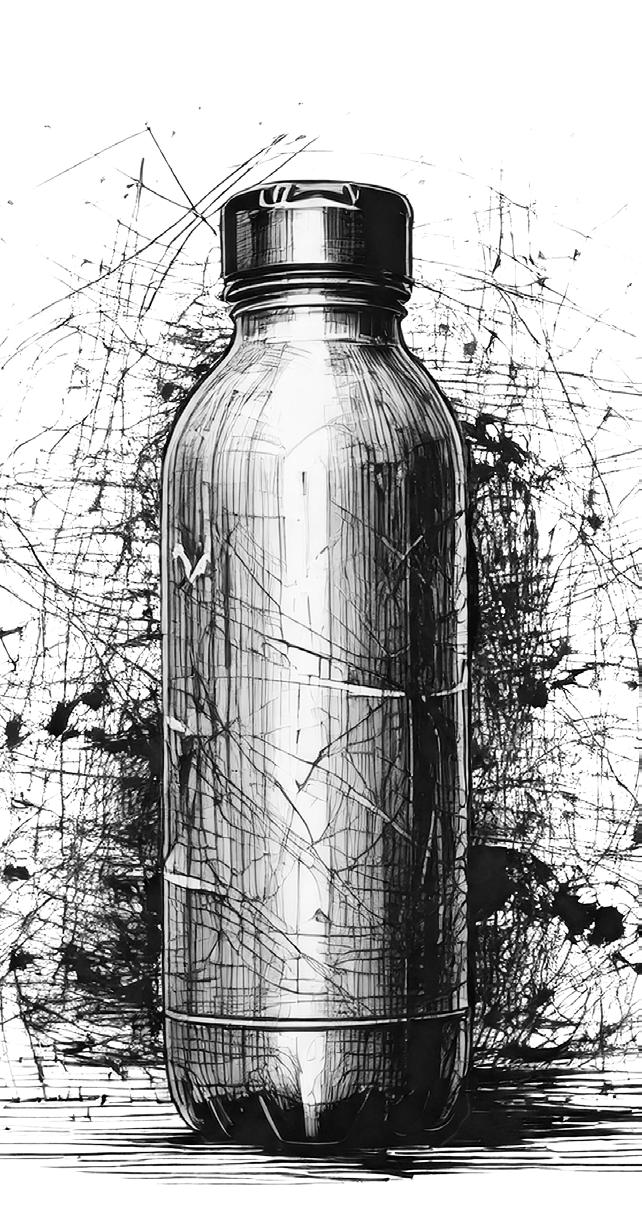
With things rapidly moving within the design industry, designers are constantly voicing different opinions, but with the industry’s fixation, they might not have a choice in the matter for long.

Gwendolyn Canfield Painting, Drawing ‘26

Life Science Illustration ‘27

Illustration ‘28

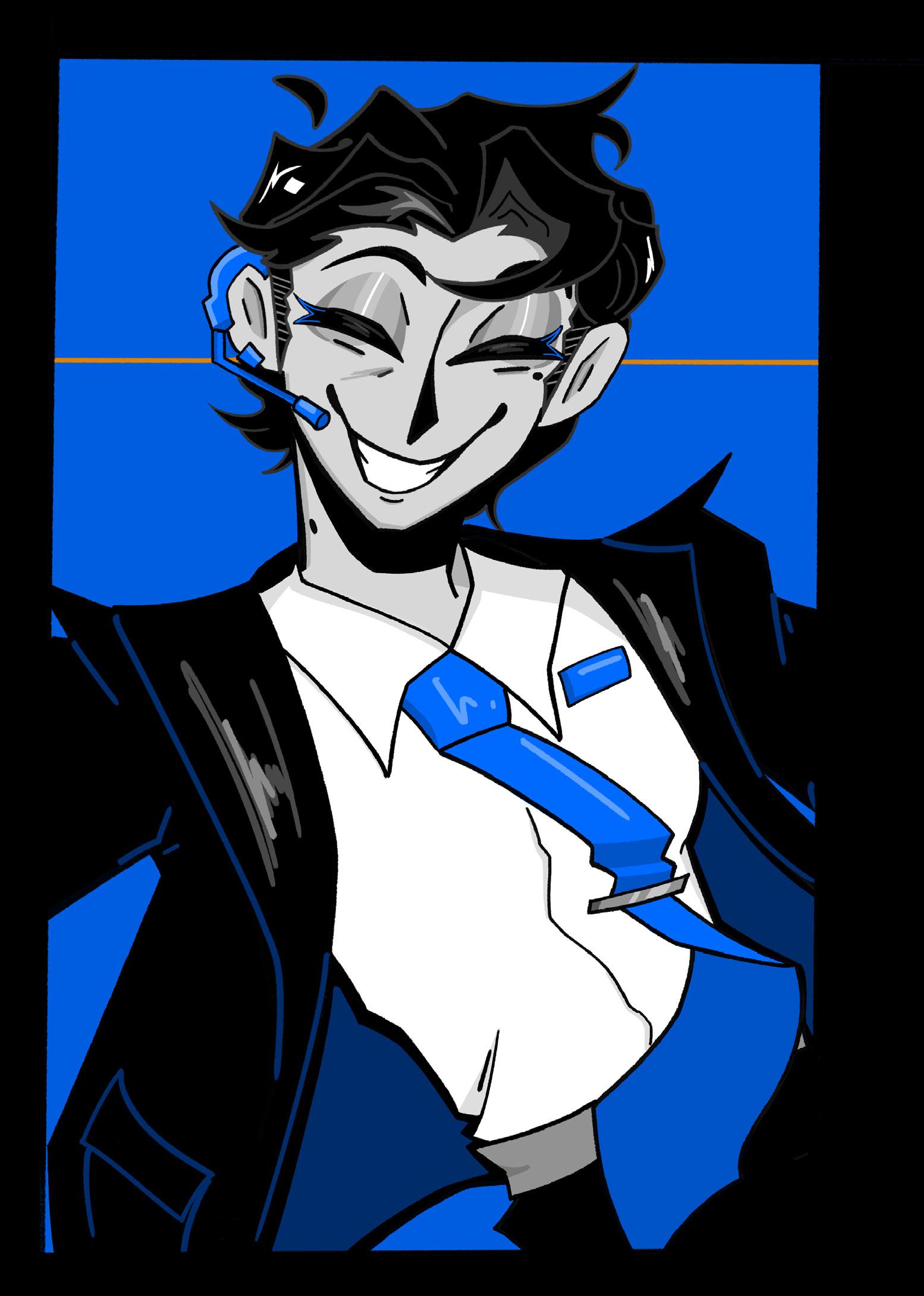




Dominic Guiddy
Your eyes blink softly as she comes into focus. Her eyes remain closed. Your hands softly climb up her thigh, then the hips, wrapping swiftly underneath her shirt and around her waist. You give it a gentle squeeze and pull her closer. Eyes still closed; her lips open softly as a yawn escapes. The faint scent of lilacs wafts from her direction pleasantly greeting your nose. Her skin shimmers softly as the sunlight floods into the room. A brief pause, then her eyes bloom open. Her irises: a delicate shade of lilac that stare back deeply into yours. Snowlike hair swiftly tickles your face as she sits upright in bed, stretches her arms up, tilts her head to the side and lets out another cute little yawn.
She climbs out of the bed slowly and stands upright, stretching only for a moment. You catch a glimpse of her panties, white with blue horizontal stripes, the fancy kind with a tiny bow in the center. Her belly protrudes slightly over the edges. It is something that she feels insecure about, but you find attractive. She puts on her glasses then starts towards the bathroom, only to be interrupted by the baby, beginning to cry softly in his crib. Reiko goes to him, picks him up from the crib, and continues to the bathroom, shutting the door behind her.
The now vacant crib stands adjacent to the bed in the corner of the room. The mobile hangs, spinning slowly then coming to a stop. A mahogany dresser is to the left of the crib. Hand-built by her father and given to you as a wedding gift. Ornately decorated
with bottles of baby powder, diapers, and formula. A magmatic fluffy orange area carpet. Continuing to the bathroom, now occupied. A whimsical sign depicting a bear doing his business. Next to the bed, there is a nightstand with an alarm clock and two glasses of water. One for each, you and Reiko. A bookshelf stands alongside the wall. Packed tightly with all of Reiko’s books and a few of your comics, up on the highest shelf. She cannot reach it anyway. None of the furniture follows a pattern, yet it works coherently to create a snug little nook that contents you, your wife and your son. Except for the chandelier.
Your eyes gaze around the room slowly as the light refracts from the chandelier, casting a vibrant spectrum of color upon the wall. You fixate upon the chandelier. It hangs roughly eight feet above the ground and is entirely constructed of glass. The main pillar splits into thirds, which wrap around in a cylindrical formation that is slightly bulbous on the lower half. Each branching loop is lavishly decorated with rows of glass teardrops. The drops glisten like frozen tears. An enigmatic radiance flourishes from the chandelier that you cannot seem to escape from.
Reiko peeks out from the bathroom, “Psst... psst... honey... I could use your help in here.”
You get up slowly, eyeing the chandelier, walk to the bathroom, and close the door behind you.
You push the shopping cart slowly, the wheels squeal with each rotation. Reiko stands closely beside you, wearing a long flowy sundress beautifully embroidered with lilacs. Your baby, Kendo, sits cooperatively in the cart, playing with his toy cars, an eighteen-wheeler and a sedan, which he viciously smashes together, making wrecking sounds. On one side of the aisle, there is cereal, granola, and oatmeal. On the other side, there are pastries, pancake mix, and other miscellaneous breakfast items. Reiko rolls onto her tiptoes to reach the pancake mix on the high shelf. She tries twice, then accepts defeat and turns to you. You leave the cart momentarily to grab the pancake mix, but when you turn around, the cart, along with Kendo, is gone.
Confusion quickly morphs into a maniacal fear that immediately immobilizes you. Muscles inexplicably, yet somehow naturally, begin to tighten, creasing the box in your grasp. Nauseating sweat beads drip from your forehead like broken tears that ricochet on the ground into a small pool. You stumble back, knees cockeyed. Unstable, both physically and mentally. Visions flood your mind. Blinding lights. Twisted metal. Unearthly yet somewhat ethereal creatures viciously claw out from the surreal milky landscape. An overbearing sense of dread renders you immovable. The grotesqueries advance. You close your eyes tightly, fortify your stance, and brace for the unknown.
An icy claw seizes your neck, slowly tightening its grip. Its viscous, inky body secretes a thick goop, soothing your skin. Perplexed, the hand travels to the side of your face. The creature leans in closer. Shrouded within the cloudy blackness, a shimmer of lilac, instantly recognizable, her eyes. She smiles at you. Your vision is nothing more than a mere hallucination, a dark fantasy born from the depths of your
twisted mind. Her face hovers slightly above yours. Wearing a baggy t-shirt, no bra underneath. She carefully lowers her body onto yours. Whispering flirtatiously into your ear. She kisses you.
Her smile fades away into a concerned, “Are you okay, honey?” She removes herself off of you and starts towards the bathroom, “Let me take your temperature, will ya’?” Her icy white hair flows swiftly with each footstep. The faint scent of lilacs wafts alongside her as she slips into the bathroom. She flicks the light on, and it pours out, illuminating the dark room you reside in. You hear her rummaging around for the thermometer for a moment, then the sounds fade. Silence.
Baby Kendo begins to cry. You still remain on the bed. Reiko is still in the bathroom when the lights flicker then snap off, concealing the room in a momentary total darkness once more, until your eyes adjust. A long pause. The cries continue. Why has she not come out yet? The cries seem to increase in volume, reverberating off the walls. Coming from within them? You get up from the couch feeling nauseated and quite dizzy. Stumbling to the bathroom. The cries jump around your mind like a padded cell, begging to escape. You grab the wall to stabilize yourself and peer inside the bathroom. Empty. The cries die instantaneously. Silence once more as the room is flooded by the dark, only to be disrupted by a pure strike of lightning from outside. You turn to it as it booms.

Agent Dunstone
Transportation Design ‘25

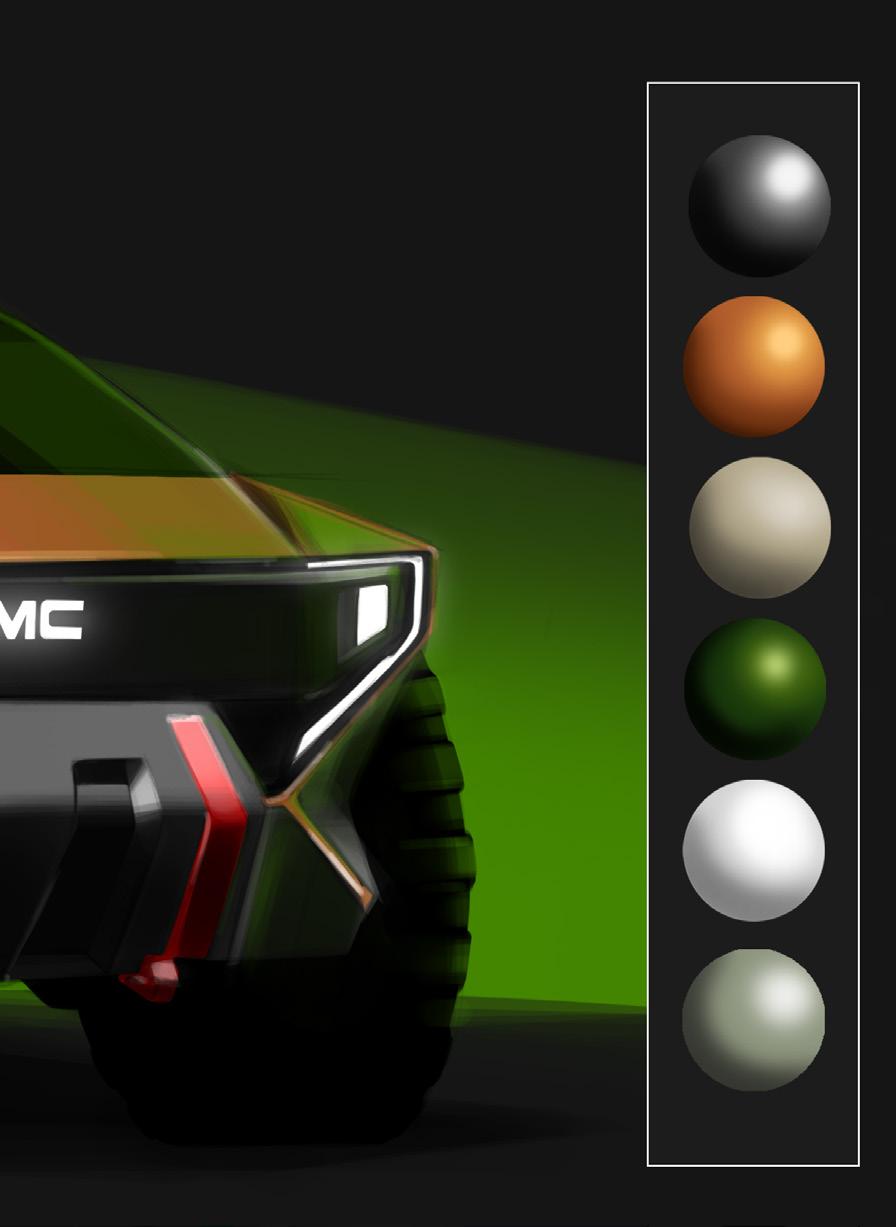


Tension 25’
Photography ‘27

Chris Stiney
Printmaking ‘26

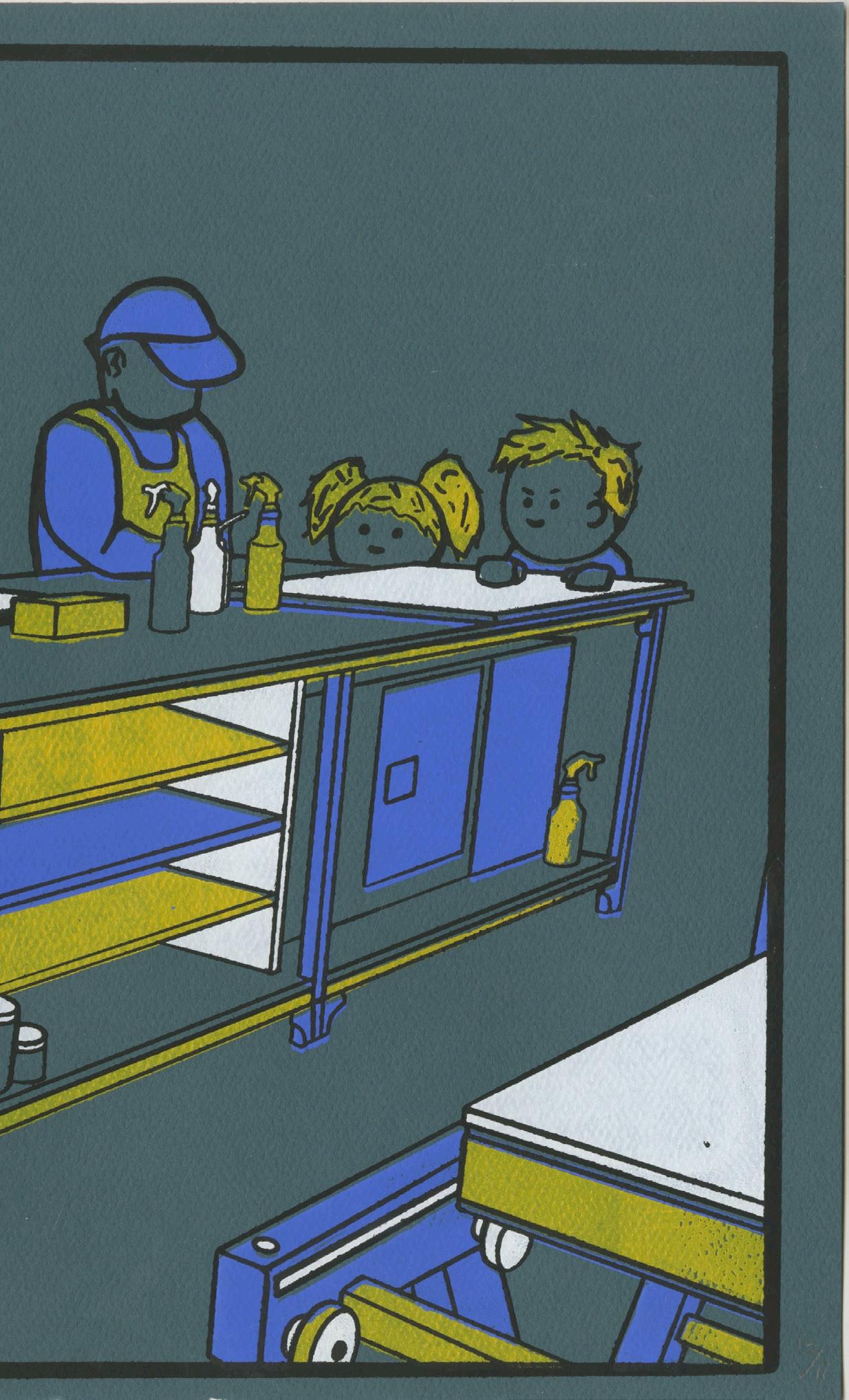
Kaylyn Kopp
Graphic Design ‘25






Gwendolyn Canfield Painting, Drawing ‘26
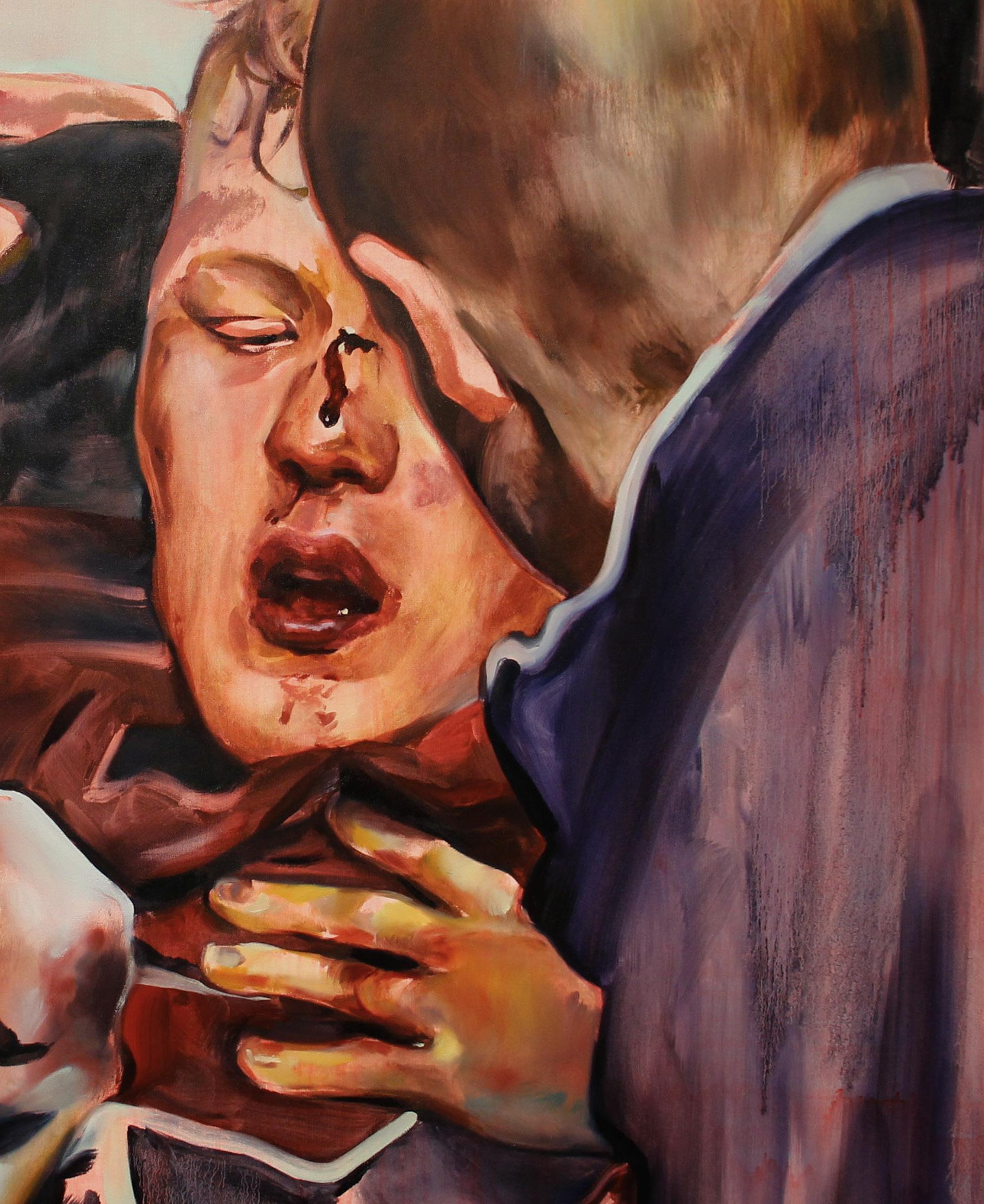


Evelynn Haky

Evelynn Haky


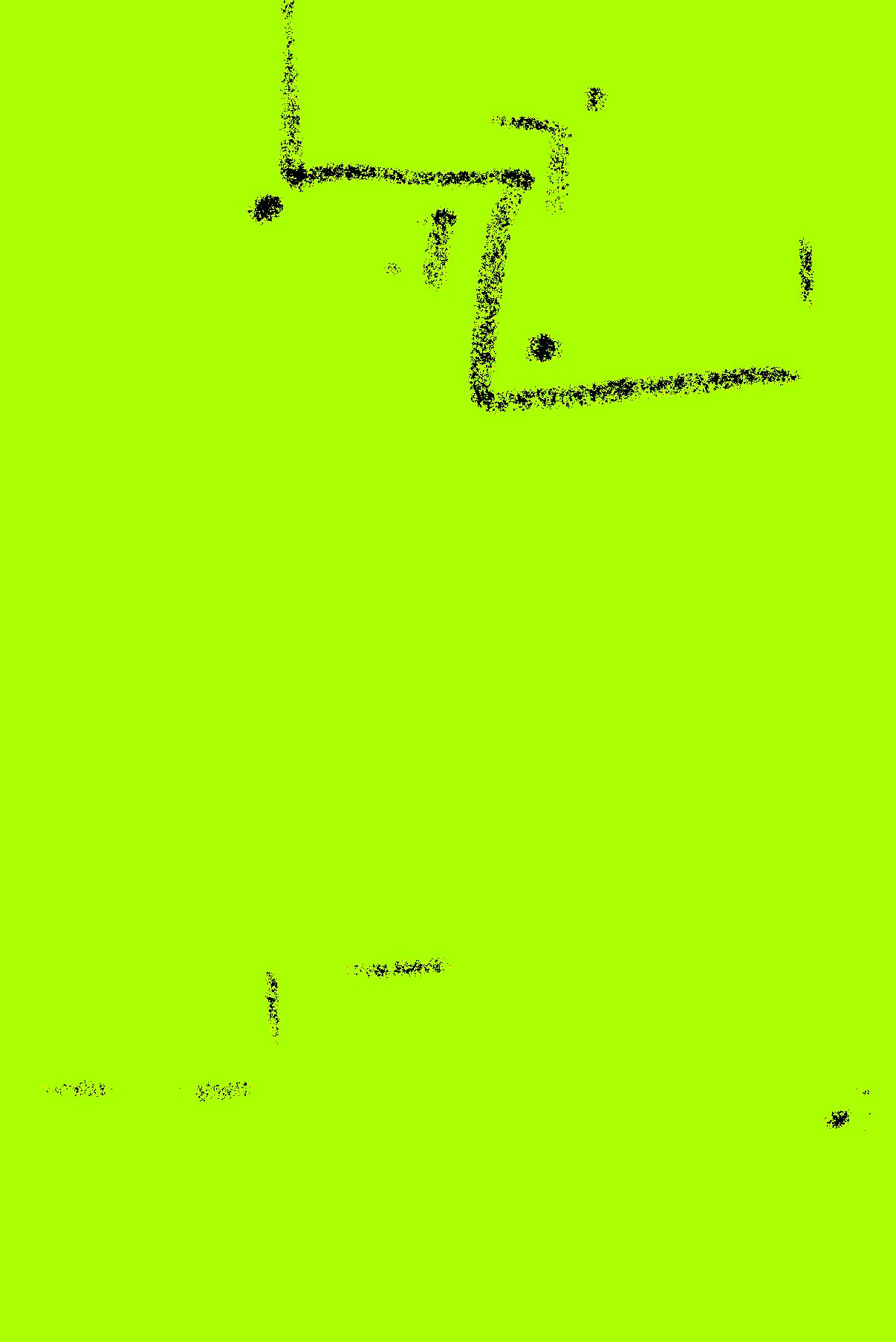
It’s almost midnight. It’s nearing the deadline. And the 11:59 Team is planning for the opening exhibition and launch. We’ll have physical copies of the publication. We’ll have tote bags. We’ll have a photo op that lets you step inside the magazine and see yourself on the cover. It will be a celebration of contributors’ work. It will also be a chance to make new connections and inspire new work. A magazine is a type of collage. Like any collage, it can help us see in new ways. We hope the launch helps to facilitate that further communication.


“I definitely have a love-hate relationshop with deadlines.”

“I try to fit my work and my practice in all the different spaces that I can.”
“It puts me in a state of mind where some of the preciousness is taken out of the end product.”
Lilly Ross is a senior, double majoring in Printmaking and Painting. In our interview, we discussed their processes within printmaking, the themes they explore in their work, deadlines, and how her BFA is going.
11:59: What medium do you usually prefer within printmaking?
Lilly: I usually like to do either litho or screen print. I’m really drawn to the process and the sort of immediacy versus the care and ritual of the labor.
11:59: How does this medium affect your art-making process?
Lilly: It puts me in a state of mind where some of the preciousness is taken out of the end product. It helps that I can pull a bunch of a single print and then modify it afterward. I think it lets me be more flexible with my output. It’s also just trusting the process and trusting yourself. You have to go through so many steps and there are so many variables. There’s a fun element of

spontaneity to it because your end result might not be what you originally intended.
11:59: Could you say more about the process of printmaking?
Lilly: I think printmaking is really cool. That might be kind of a lame answer but it’s definitely something that I’m just very interested in. The idea of having to go through this long process, it’s like a science and an art. That’s something that interests me versus painting or sometimes sculpture. There are scientific prescribed steps that you have to do for a lot of these things. And I just think it’s really cool to become part of an experiment in your art making. I think it’s very exploratory.
11:59: What themes do you like to explore? What do you create your art about?
Lilly: My work revolves a lot around humor. I like to have little jokes in my pieces or make things that are funny and silly that people can enjoy. Some of them sort of use humor as a conduit to get at deeper topics to talk about, but I usually like to print illustrative silly images. I feel like it’s a very freeing medium in that you can just grab a piece of film and draw a little doodle on it, and you have a million of them. I like to do fun stuff.
11:59: What’s your BFA process looking like and, what’s the theme?
Lilly: For my BFA, I am making a bunch of work, both in painting and in printmaking that references sort of the contemporary era of the Internet we live in. I’m really interested in the digital sphere as someone who grew up on the cusp of the Internet with technology being such a massive part of our lives. I’m making some mimetic paintings that are referential of the 2010’s, Internet top text, bottom text-style memes. In print, I’ve recently begun exploring these illustrative, fantastic sort of figurative representations of the inner workings of the Internet and breaking it down into signs and symbols and having a suite of work that tells a story about how we interact with the Internet and how we live in this digital space and our relationship to it and each other. I feel like it’s kind of magical, the way that, you know, you used to have to wait weeks to send a letter and now you can do it in an instant with an email or being able to talk to your friends at three in the morning. I wanna tap into that sense of wonder. I’m not sure how those two suites of work are talking to each other yet, but I’m excited to see how it turns out. RIP longcat

11:59: How do deadlines affect your art-making process?
Lilly: I think it helps me. It’s both a help and a harm. I definitely have a love-hate relationship with deadlines. I think they definitely motivate me to get my work done. But often, I find myself skating in just below the deadline. I try to fit in my work and my practice in all the different spaces that I can. Sometimes it gets hard to negotiate those times. So having a strict deadline on things definitely helps me sort of anticipate when something needs to be done by, and lights a fire under my ass to get stuff done. But I think I’ve had some very fun and interesting things happen when rushing to get a project done from the deadline because it’s just–I feel like once you hit that zone where you’re just making and you really get into the stride of it, you can have some really interesting things happen that if you were overthinking it or thinking too much about it, you might have stopped yourself from doing or hesitated to do.

“I definitely have a love-hate relationship with deadlines. I think they definitely motivate me to get my work done. But often, I find myself kind of skating in, like, just below the deadline.”
- Lilly Ross
haslikedyourmessage



Sculpture and Expanded Media ‘27




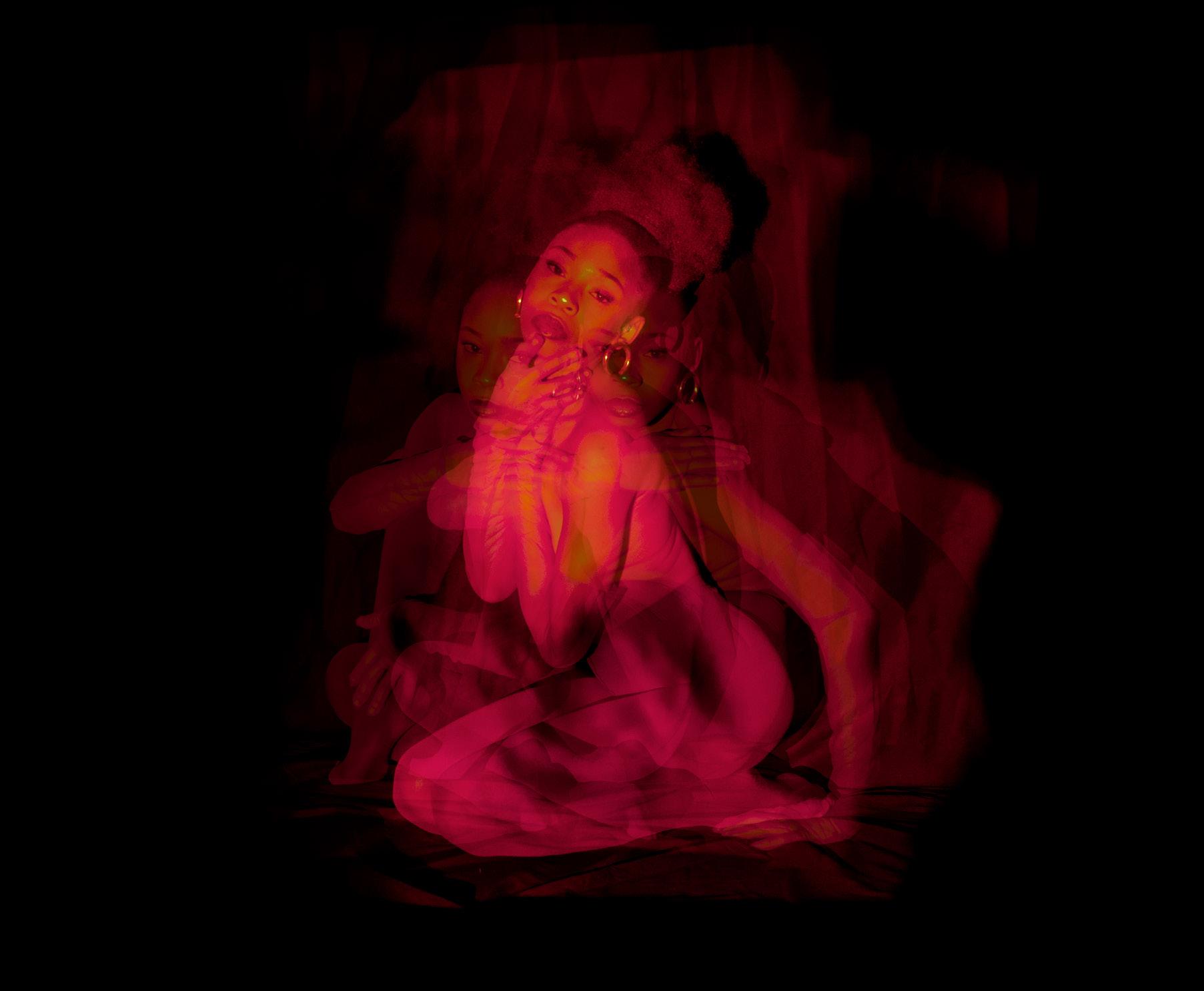


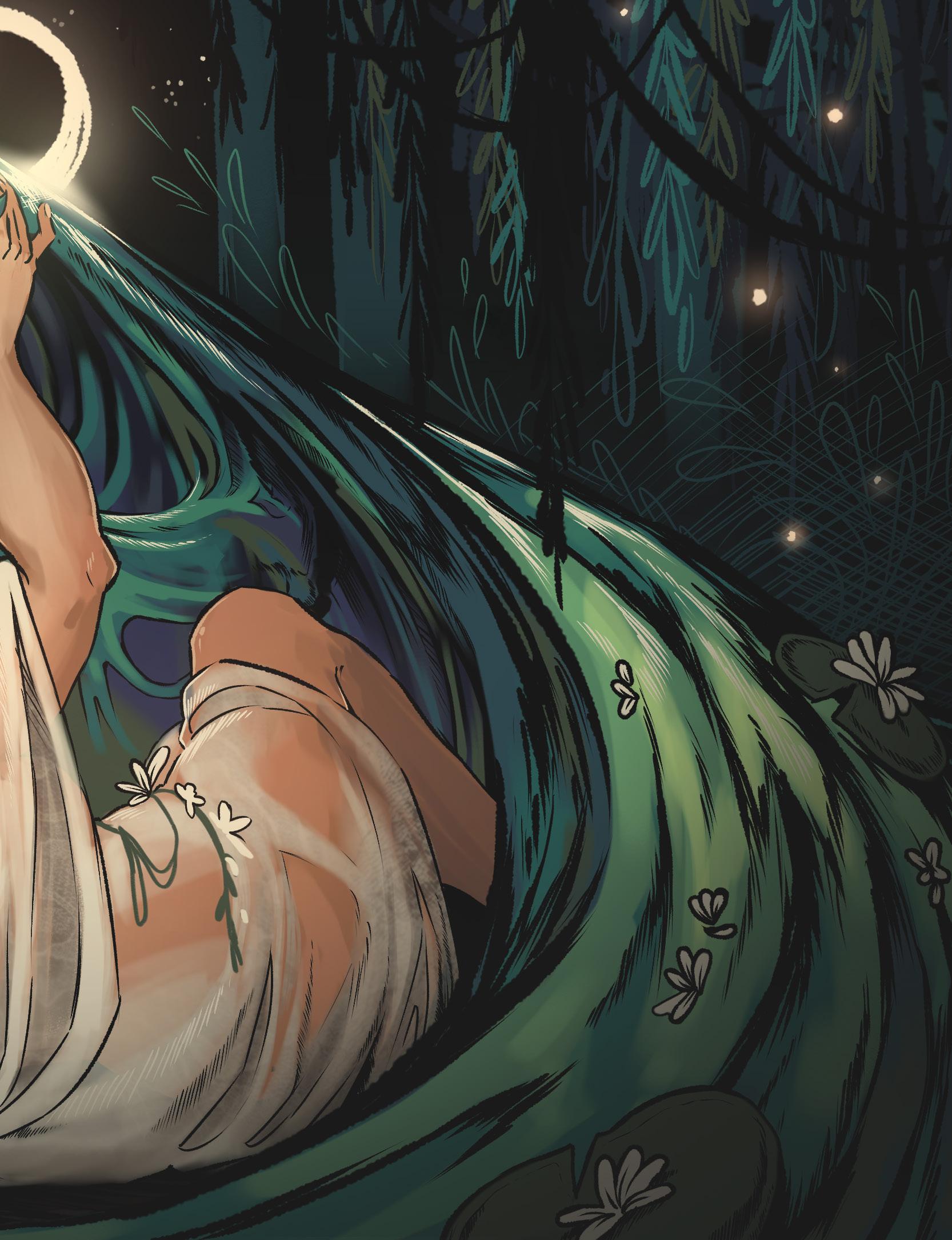


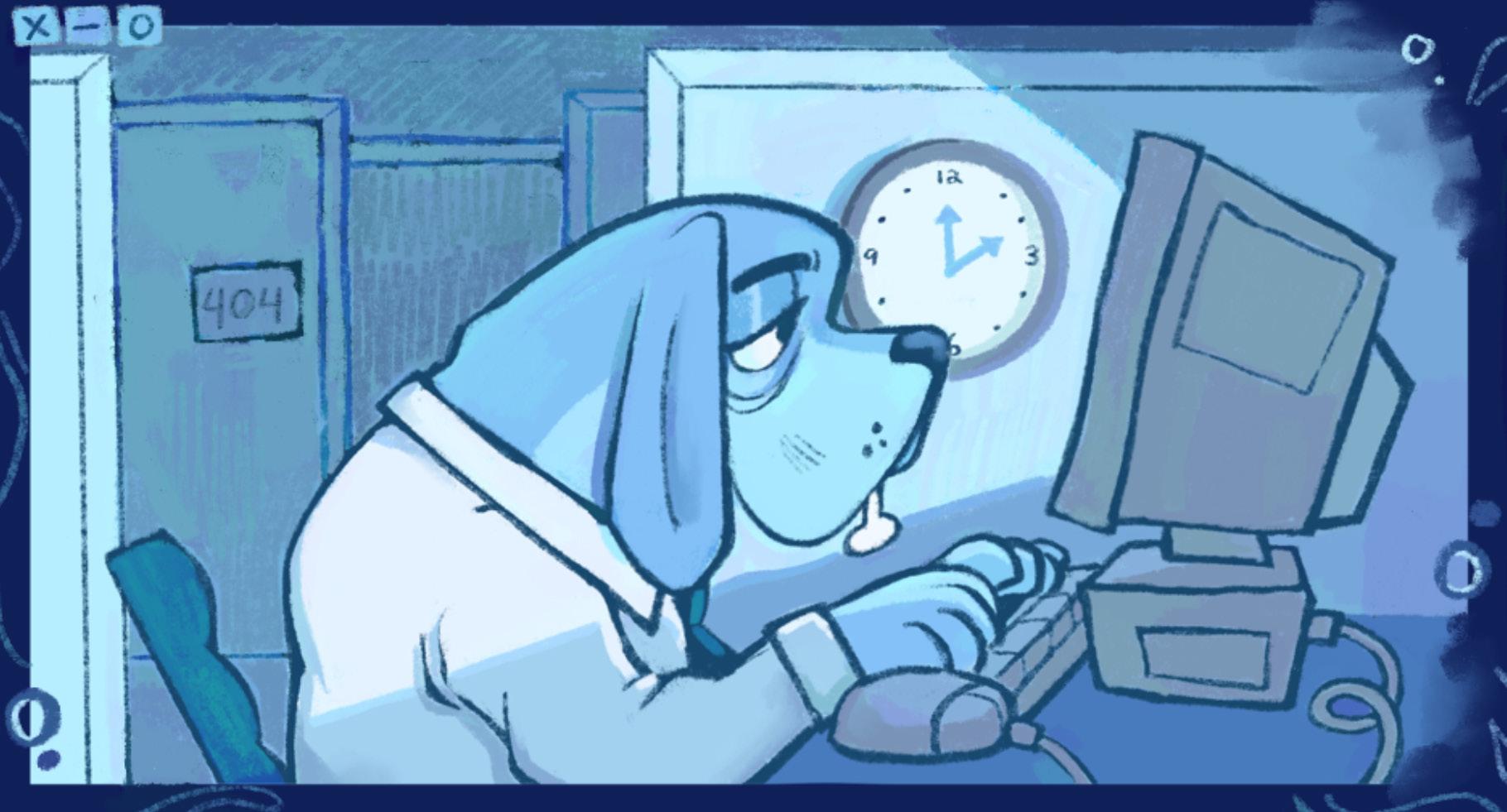

Blake Nicholas
Illustration ‘26

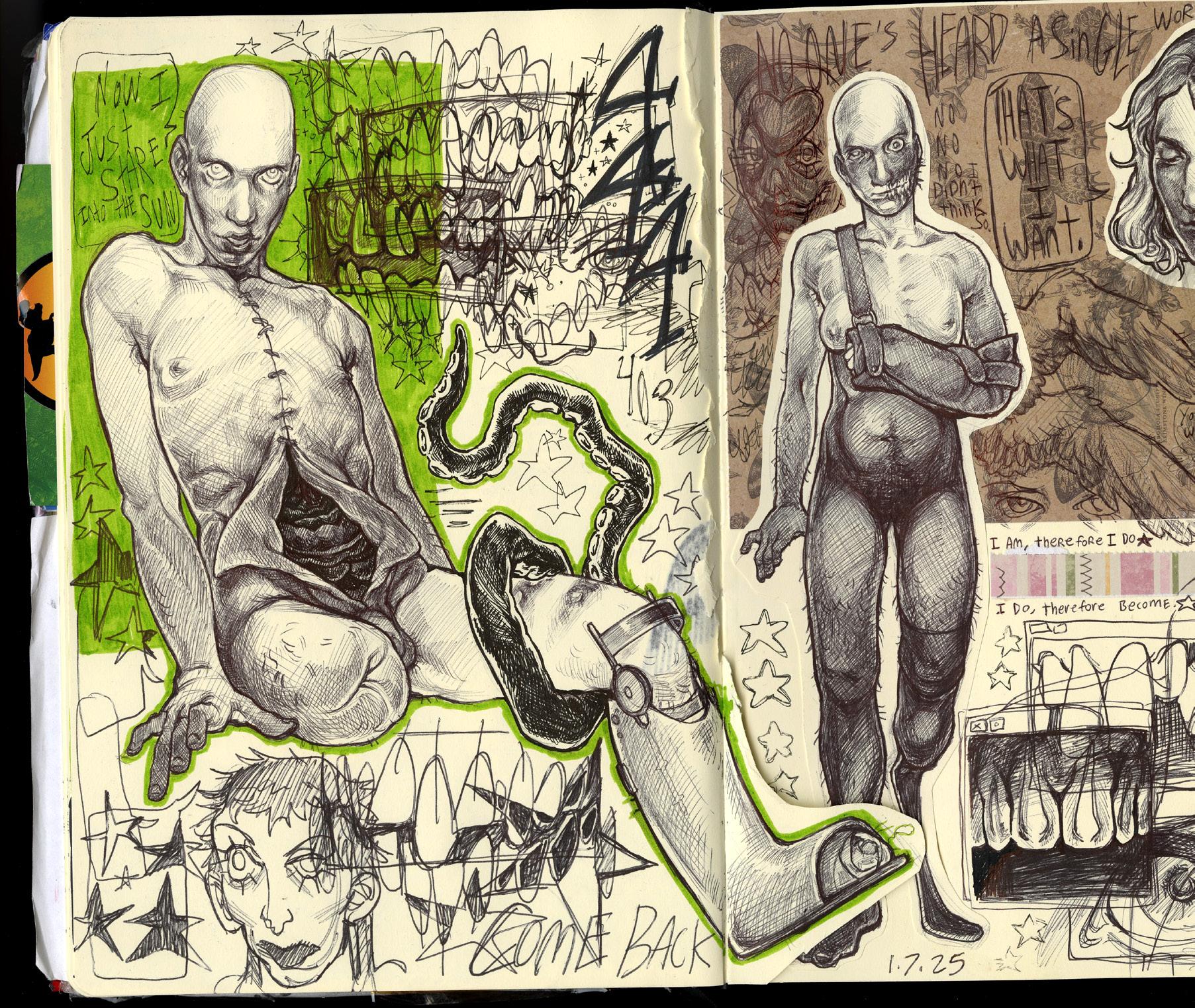
Mary Hansen
Illustration ‘25

Graphic Design ‘25
every night i stay tossing and turning in my bed. the thought of you never once leaving my brain. all the notes that was ever left behind replay in my head. the memories play over and over becoming a strain. i just wanna leave you behind, away from the lies and get ahead. one thing reminds me of you and i go down the drain.
every thought of you stuck in my mind. i just can’t escape this haunting. i look over and over for something to find. to get away from all this taunting. the tears in my eyes swell up and i slightly go blind. i just hate the thought of you, go away, wanting.
you were never someone true to me. just a whole bunch of lies complied. i never fully said what i thought just always went on an agree. no longer wanting to be near you, feeling so tied. i just want one night to finally be an escapee. we were never truly one, we were always at a divide.
i ask once again for one night without this feeling. one night without a haunting.


Jesenia Lopez-Rodriguez
Illustration ‘26
When human beings die, morality becomes obsolete. Who or what will judge you after everything has passed? I thought about this for days in my solitary confinement. The very reason living beings value their lives so dearly is because of the inevitability of death. Some believe the afterlife to be Heaven or Hell, perhaps reincarnation, or a field of reeds. Truth be told, I don’t know which of those theories is most believable. All seem like realities worth acknowledging. I used to think when we died our atoms simply disintegrate into tiny particles that make themselves useful elsewhere. The law of conservation of energy states that what is created cannot be destroyed. Our genetic makeup is converted from human carcasses to fuel for earthworms. I used to believe in the circle of life.
I know differently now.
Human beings go to die in solitary confinement, but do not get the reward of lavish fortunes most folktales promise with life after death. That is why the authority here pays me no mind when I make a lot of noise. They will deny me my presence and seclude me to an atrocity. But I will demand to be seen. I am here, I was seen, so therefore, I exist. The guards can criticize me all they wish, but they cannot avoid the truth that blood still runs inside my veins. I cannot be ignored.
And yet they have simultaneously killed me.
Morality becomes obsolete when your life is a living hell and the world has villainized you. You are simply a thing that is not deserving of humanity when you are involved in the same predicament I find myself in. You are evil personified when you are brought to perish behind those rusting vertical bars.
“Nothing is pure” I will plead. I will shout. Forgiveness is a lost practice. Animalistic tendencies might arise, but who could blame me when I was limited to a revolting 6 by 8 circumstance.
No one will question why I’m here. They will simply believe it was my destiny. Human beings judge so harshly, reduce one’s character to nothingness, and scream for you to bleed when you act alive. When you let go of the world’s expectations and truly, I mean truly, allow yourself to experience non-conformity – that is a life worth living. What I did was an act of my livelihood. I am here and perhaps I deserve to be.
But my energy is not useful here.
Life is still here. Non-momentous. But my mind’s eye never rests. I walk the edge of insanity and self-enlightenment. I hear my thoughts here. I remember my prayers. Zachariah said to be patient and have hope. So I will wait here, stressing every ounce of self control to not forget myself nor vision. Yet I cannot deny this unfortunate reality. I see sunlight, but I know it is fluorescent
electricity. Still, I must pretend that heat is organic. I must pretend that what I feel is warmth.
I woke up feeling motivated
To explore my mind more openly. This life I’ve lived so carelessly. I’d forgotten what it meant to be Loved and loved collectively.
I’m losing my humanity.
I saw the sun again today. A part of me couldn’t help but compare it to the manufactured lights I had become accustomed to. Those rays of radiation were incomparable to any man-made superficiality of heat. I prayed to the flowers and trees and breathed in the dampness of that dark blue 8:30 morning. How long has it been since this much color invaded my environment? I had seen too many variations of gray – how could I have forgotten nature’s vibrancy?
Yet I promised myself I would not let them see my relief. I bit back my tongue, kept my shoulders square, and made no movement to suggest I was appreciative of them for releasing me early. I struggled to contain myself; society punished me for expression before. But feeling my feet sink into the mud never felt so gratifying.

Illustration ‘26



Milo Spencer Drawing ‘27
I’ve always felt a connection to the sun I feel like a plant as I grow when it’s too dark I wilt and in the light I glow I am comforted by warmth no matter how subtle it may be whether it’s my mother’s embrace or standing in the sun while it’s snowing I crave the gentle comfort I stand tall and my heart swells knowing that someone is near even though that warmth can hurt as well It can burn you at the touch that’s why you flinch when it is near but when its light is gone you shiver in your cave in fear
I think Icarus had a point for I think that I too would fly into the sun if it meant I could glow like you


Lachlan Howard
Sculpture and Expanded Media ‘27
Long ago, there was a tower that sat in the middle of a clearing at the heart of a deep wood. One day, a noble knight was riding along, and happened upon this clearing. "Oi! Sir Knight!" came a voice from the tower. He looked up, and with the height of the tower, could just barely make out the form of a young maiden."O fair maiden," he called, "prithee tell how one such as you comes to be in a place like this." "Alas, Sir Knight," she answered, "my cruel mother has kept me in this tower since my birth. There is no passage in or out, save for this window." "Then how do you get food and drink?" asked the knight. "Once a month my mother brings me supplies," said she. "My hair has grown to such a length that, she need but call to me, and I shall let down my hair for her to climb." "Then, fair maiden, let down thy hair, and I shall climb to you and aid your escape from this place," said he. "Oh what a brilliant plan Sir Knight," she called, and thus threw her long golden hair out the window.
There were many questions the knight thought about asking during the long climb. He could've asked why her hair was wet, or questioned how it was so warm. He could've asked why the stone of the tower seemed to sink ever so slightly under his boot. He could've asked any of these questions, and doing so might have saved his life. He was about to ask about the floor. He noticed its fleshy tones and felt its bumpy, squishy texture. He was about to ask the maiden, but as his gaze swept the room, he finally saw what the long golden hair was connected to. And by then, it was too late.
The next morning, the knight's steed grazed in the clearing. The tower stood, ever slightly taller. Months would pass, more knights would come, and the tower would feed.

You’ve reached the end.
Beyond our academic lives, deadlines weigh on us through many means. Ranging from the political state of our world to the time we have with loved ones, these deadlines can cause immense stress on our everyday lives. We know as artists and designers that this can influence our work.
Deadlines and the end of the day can also bring feelings of accomplishment. There is still joy in the time that we do get. There is a balance between recognizing that time is passing and making do with what you have. Deadlines are stressful but also a time for celebration. We as artists and designers have the power to express these emotions through our work.
The staff of 11:59 give our warmest thanks for picking up our publication and giving it a read. We’re at a moment when things are changing in the world. That includes changes in technology and how people interact with content. The physical presence of this issue is evidence of the time, effort, and care that define the CIA community. We’re proud to showcase the work that students create. And we’re excited to see publications at CIA continue.
Until next time,
The 11:59 Team

11:59
Copyright © 2025
Interior designed by Ben McDougall and Samantha Mitchell
Opening feature spreads designed by Wild Shafer
Illustrations by Elijah Boyd
Cover designed by Ben McDougall
Typeset in Acumin Variable Concept designed by Robert Slimbach and Venice Blvd designed by Amy Hood and Jen Hood
Printed in April of 2025 by Oliver Printing & Packaging in Twinsburg, OH oliverinc.com
Printed on 70# Omnilux Digital Text and 100# Cougar Super Smooth Digital Cover provided by Millcraft millcraft.com
Published by the Division of Liberal Arts and the Graphic Design program at the Cleveland Institute of Art
Website designed by Annie Koppitch 1159mag.com
A special thanks to the Division of Liberal Arts, the Graphic Design program, and the office of Enrollment Management and Marketing for the generous support
